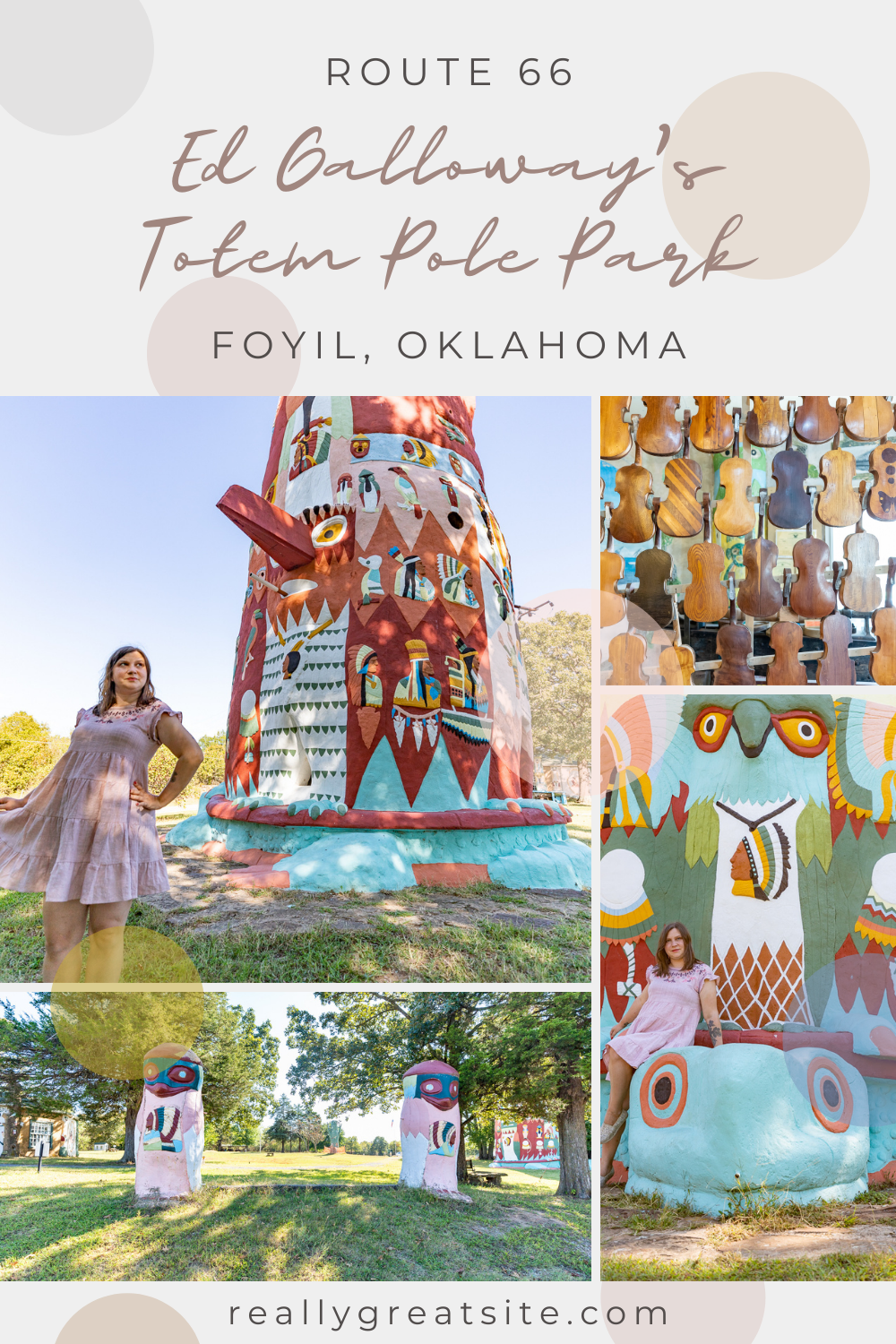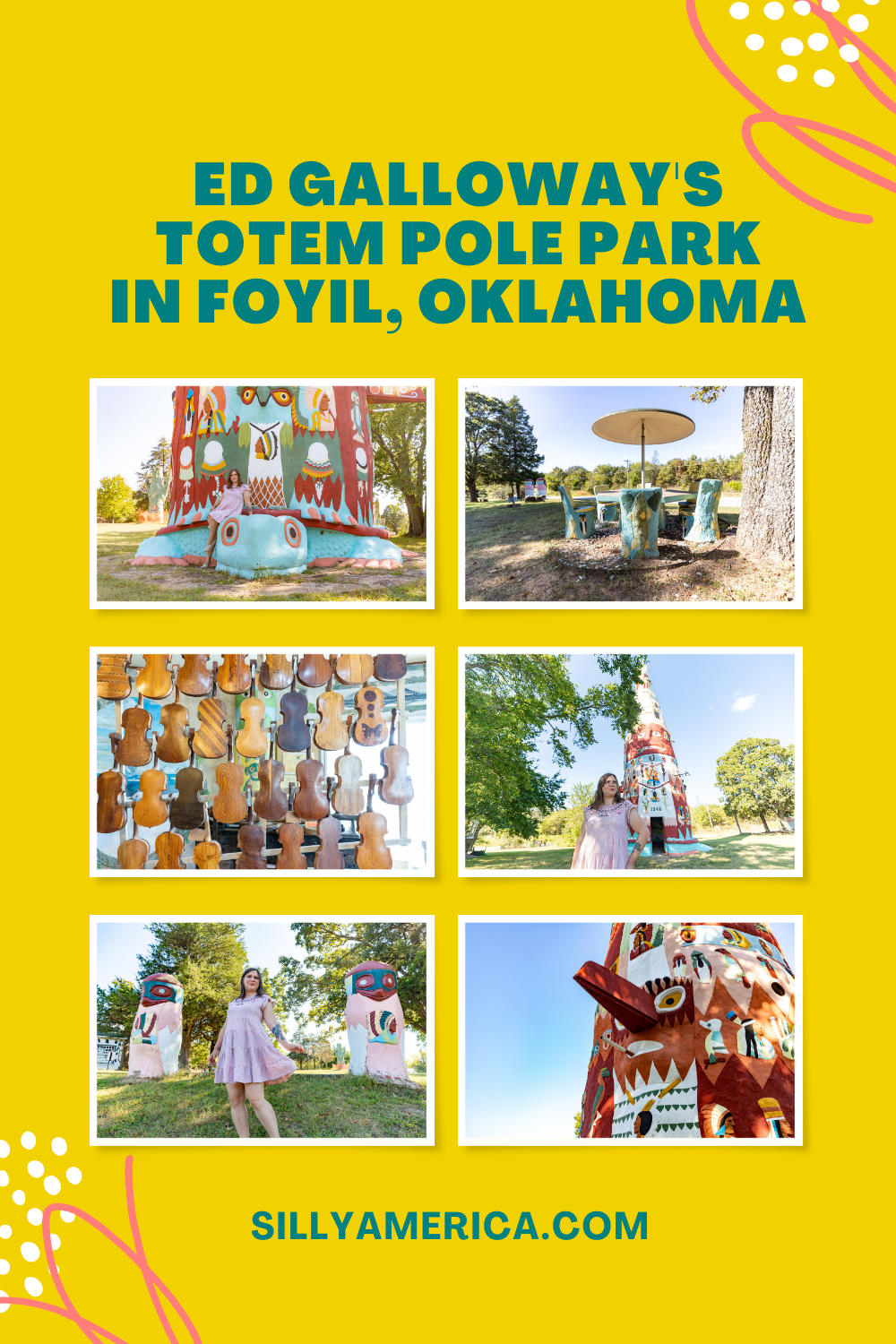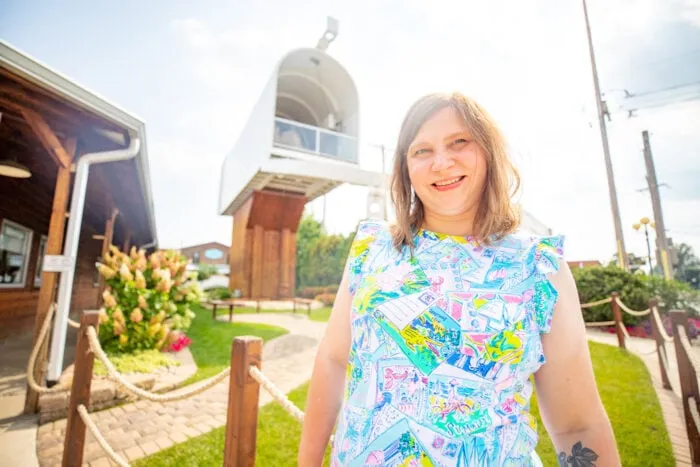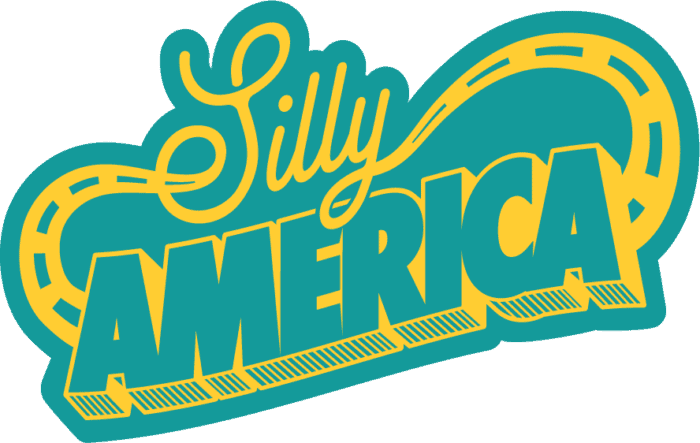Just a 3.5 mile detour from Route 66 you’ll find this attraction. Known as the “World’s Largest Concrete Totem Pole,” it’s also been described as the oldest and largest example of a folk art environment in Oklahoma: Ed Galloway’s Totem Pole Park in Foyil, Oklahoma.
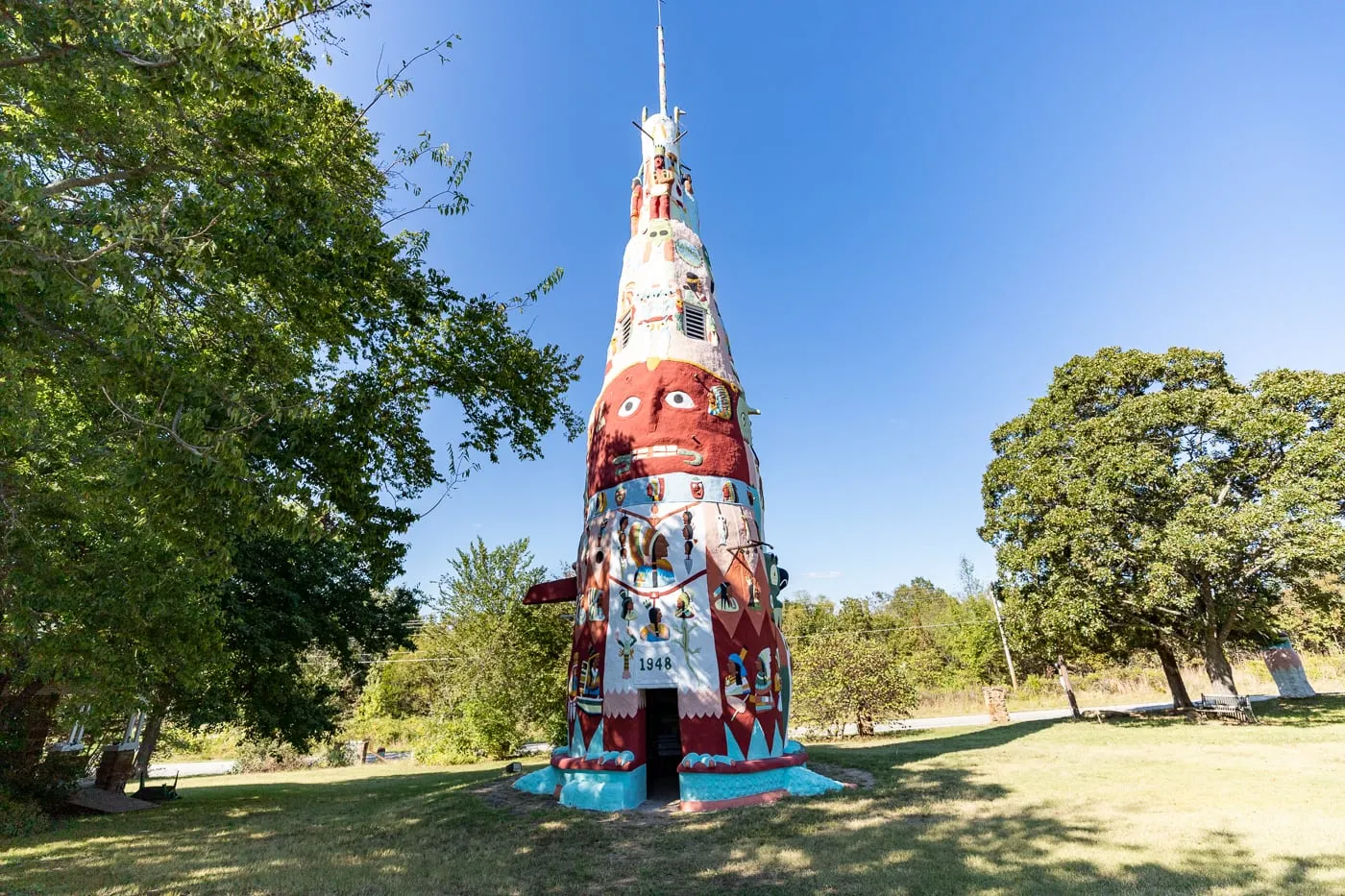
The 9-acre park is the work of Nathan Edward Galloway who was born in Springfield, Missouri in 1880. He enjoyed woodcarving as a child and grew up to be proficient in woodworking and blacksmithing, eventually establishing himself as one of Oklahoma’s premiere folk artists.
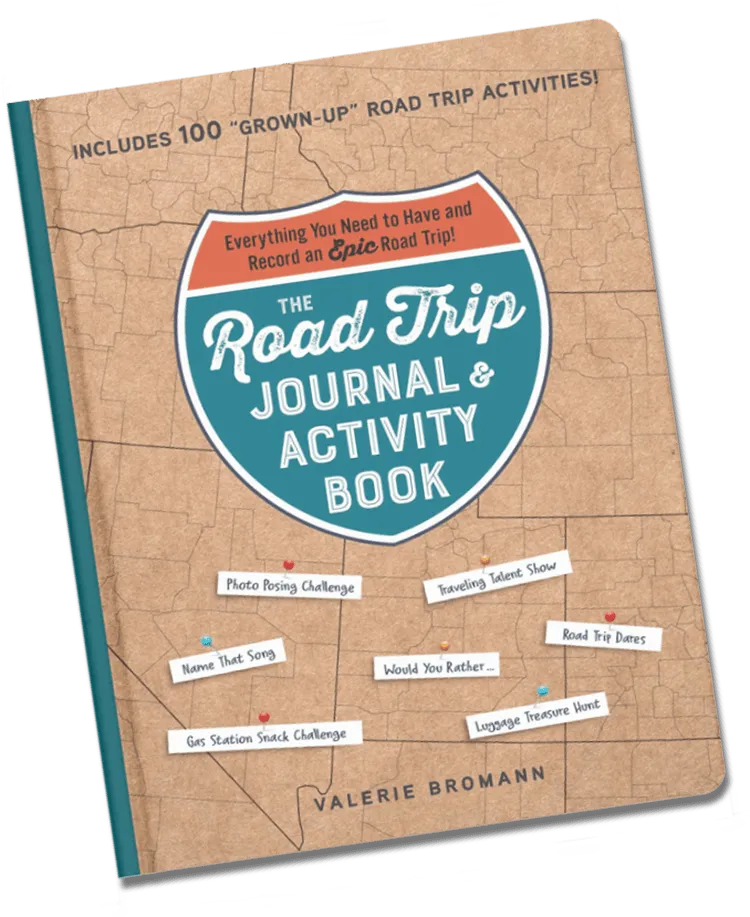
The Road Trip Journal & Activity Book
Enjoy fun games and challenges to pass the time on your next road trip and have a keepsake to look back on for years to come with this entertaining must-have for your next vacation.
From 1937 to 1961, Galloway worked on the Totem Pole Park. After many years teaching wordworking to orphans at Sand Springs Home, he retired to the property and spent the rest of his life constructing the ornate objects out of stone, concrete, reinforced steel, and wood.
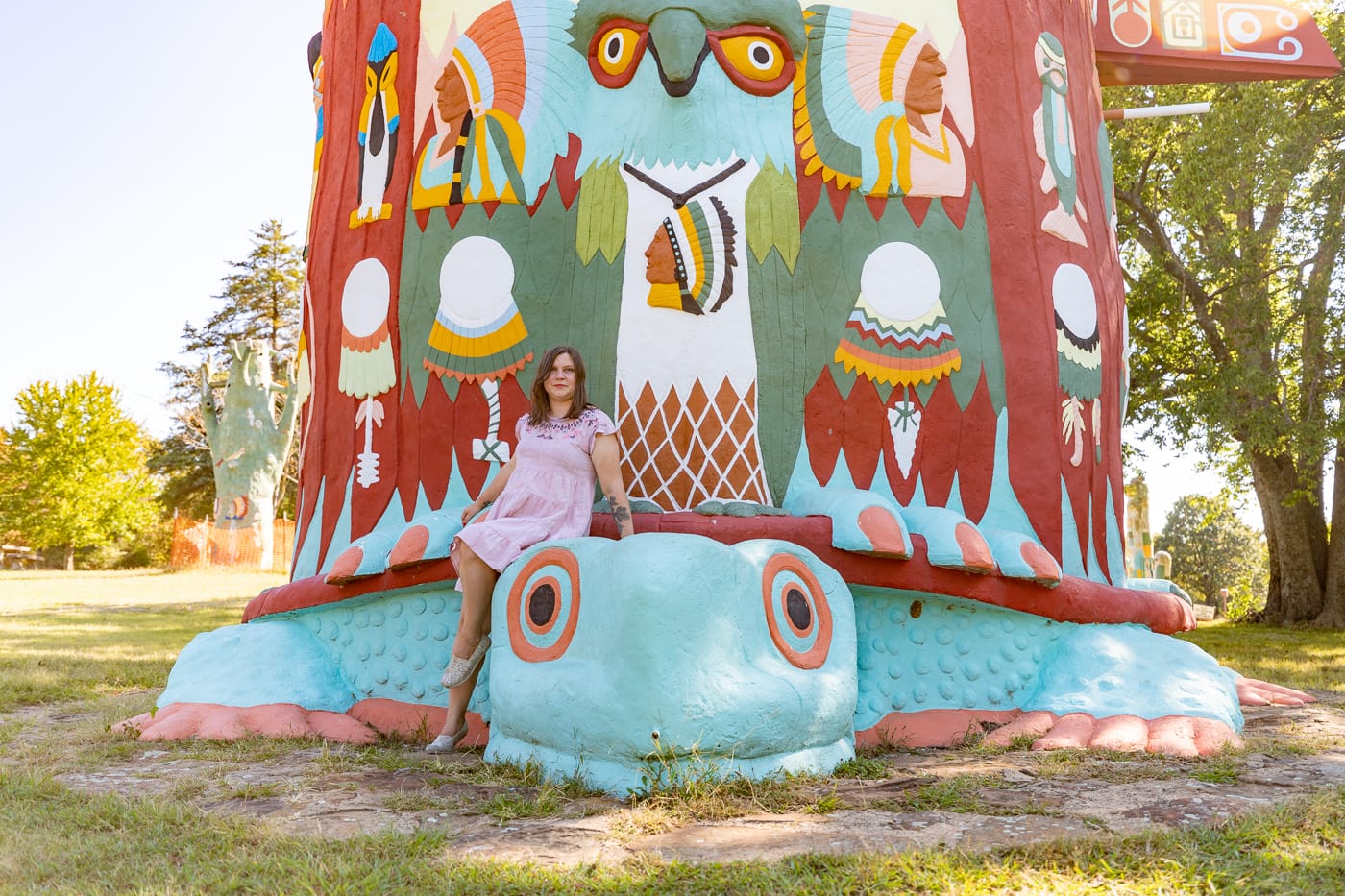
The anchor of the park is a 90-foot tall main totem pole made from 28 tons of concrete, scrap metal, and red sandstone with carved bas-relief designs. It reaches six stories high and at its widest is 30 feet in circumference. At the base is a giant sandstone turtle and, as your eyes travel upwards, you’ll see lizards, owls, and depictions of Native American chiefs in full headdress. At the top are four nine-foot Native Americans, each representing a different tribe. The giant totem pole is hollow, with a winding staircase inside (though, it is now locked to visitors). Galloway took eleven years to construct the piece, working on it from 1937 to 1948.
Besides the giant totem pole, you can find many other pieces of art on the property. Galloway built several other sculptures based on Native American art, like a giant arrowhead and concrete birds. There is also a 12-foot tall concrete tree trunk with holes for birds to live in and ornate picnic tables designed to look like animals, a barbecue/fireplace, and fish arch gates.
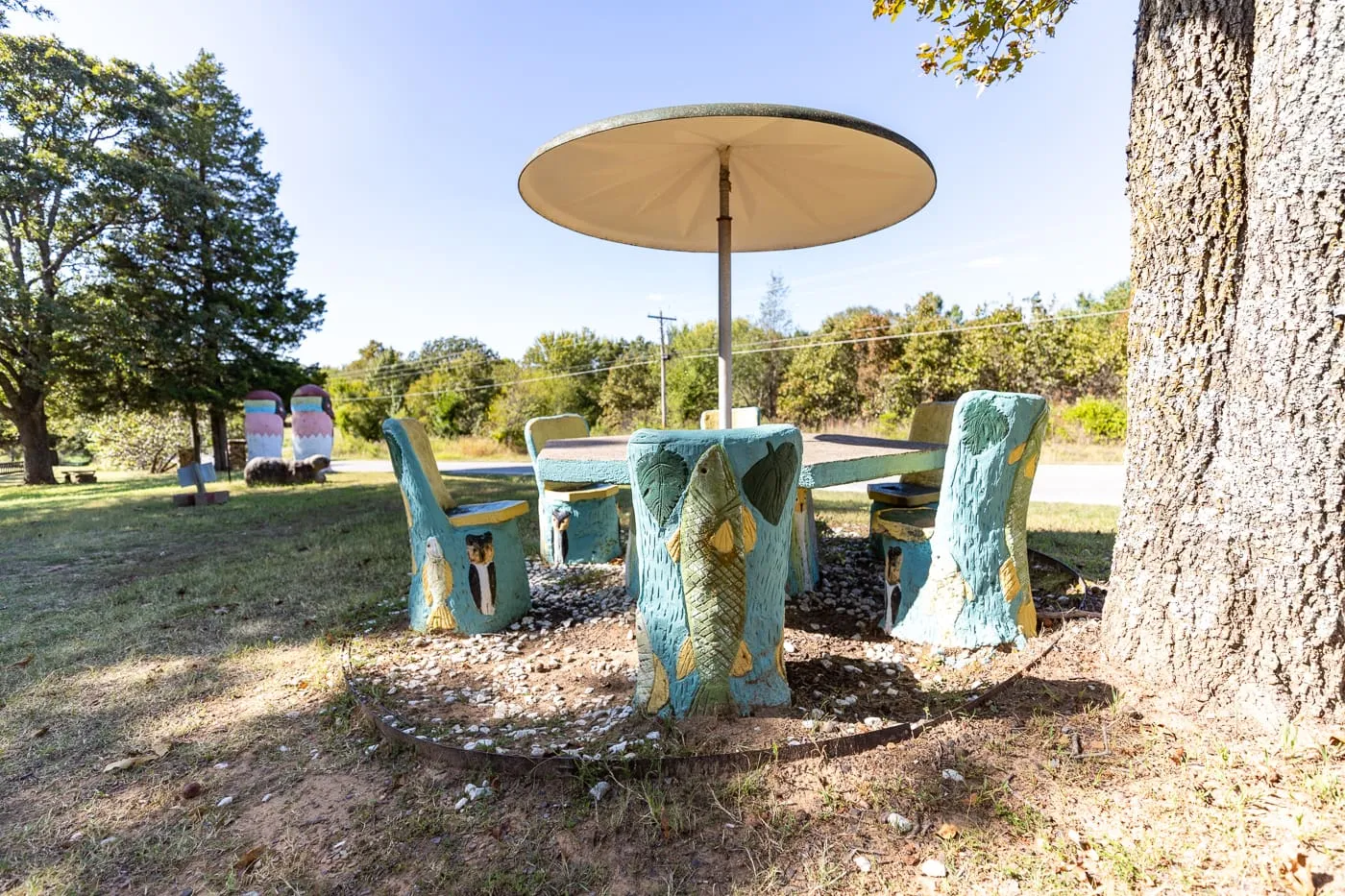
Also on the property is an eleven-sides building made to look like a Navajo hogan that serves as a museum called the “Fiddle House” where you can find Galloway’s collection of handmade fiddles among other art.
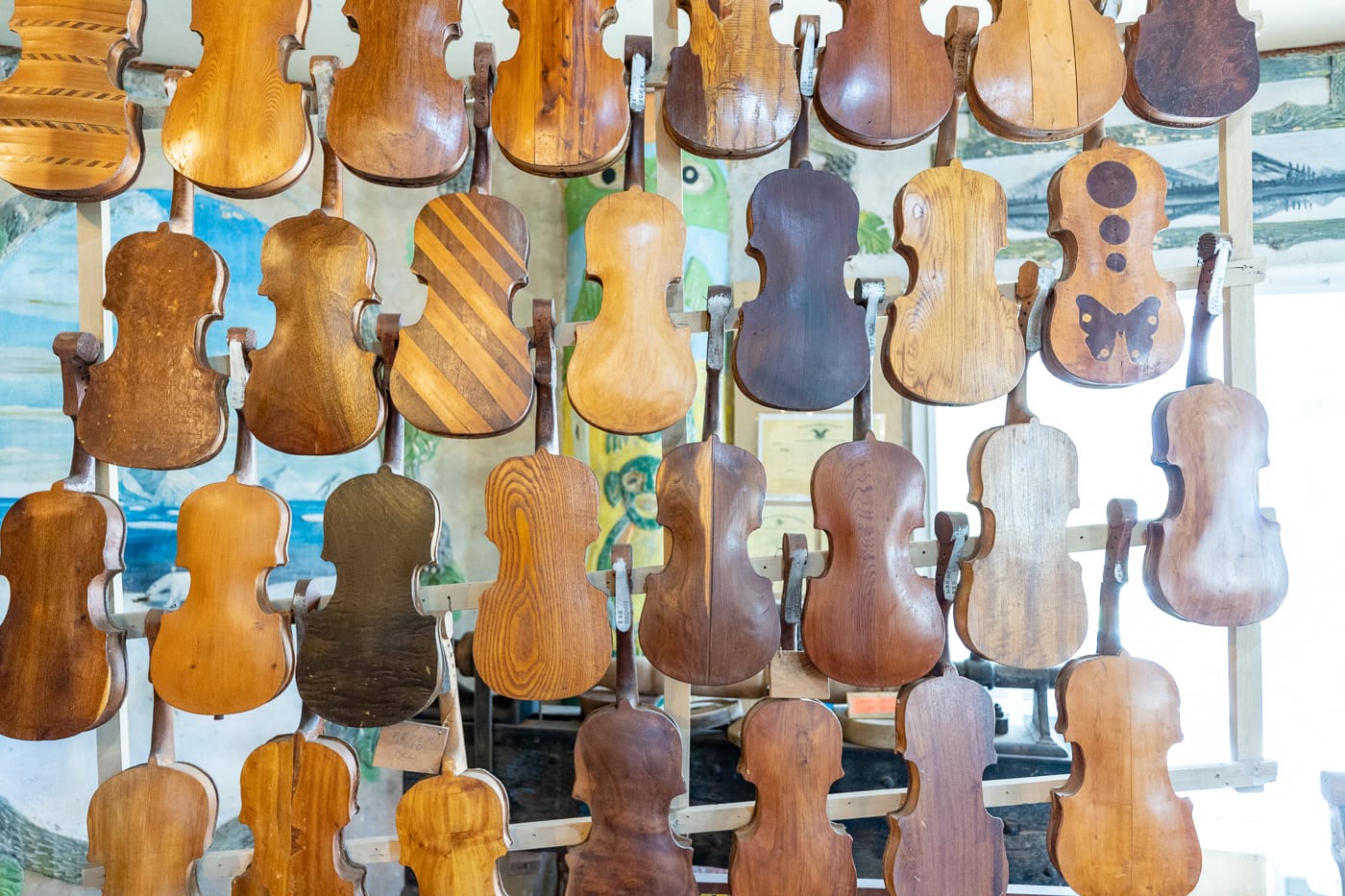
Galloway died of cancer on November 11, 1962, leaving behind his 9-acre art park. In the following years many of the sculptures fell into disrepair and were vandalized and much of the art was stolen. In 1989 his family donated the property to the Rogers County Historical Society, who, with the help of the Foyil Heritage Association, still maintain the lot. In the 1990s the historical society, along with the Kansas Grassroots Art Association, took on a restoration project to return the site to its former glory. Restoration work still continues to make sure this Oklahoma roadside attraction will be visitable for years to come.
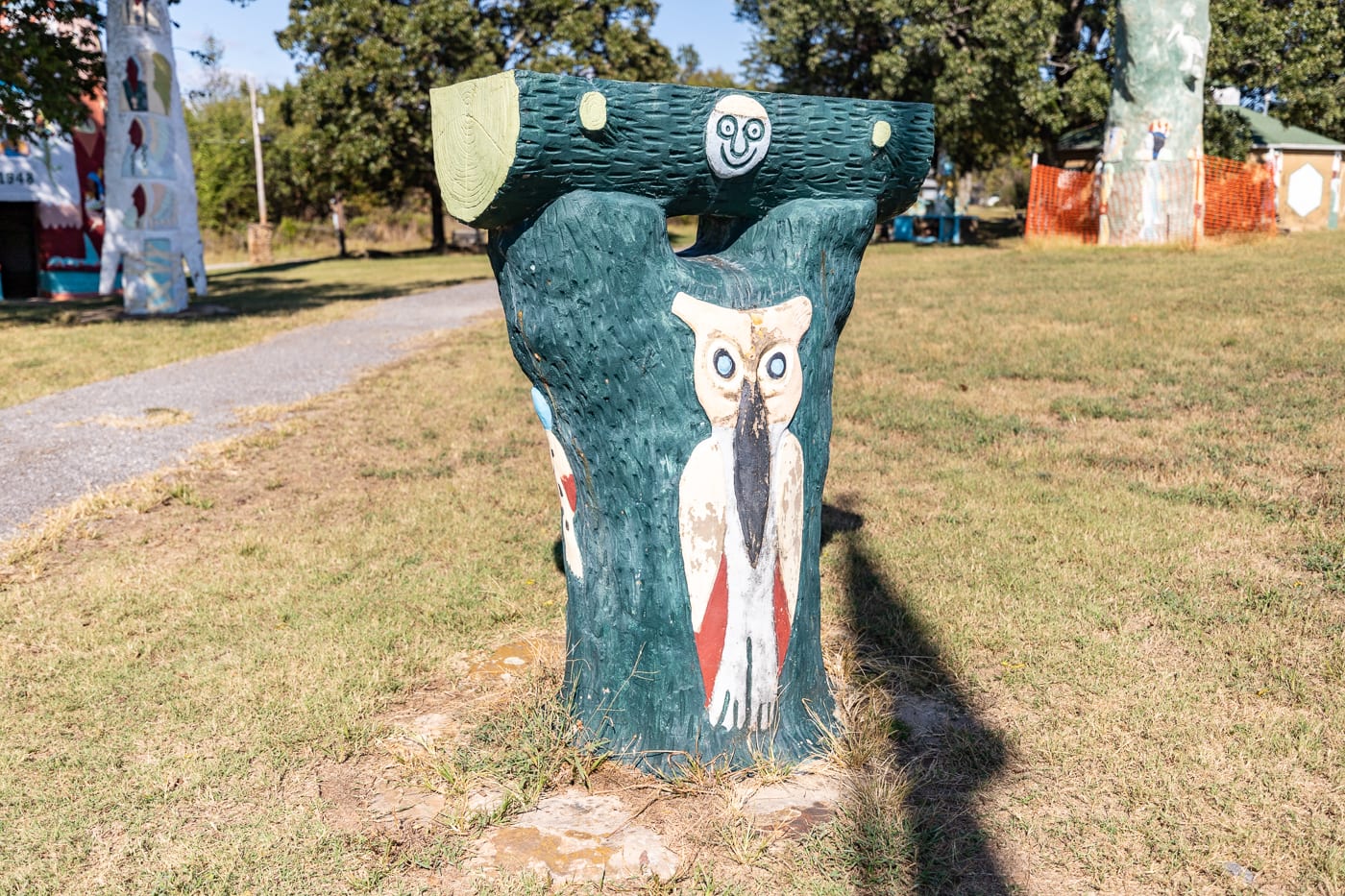
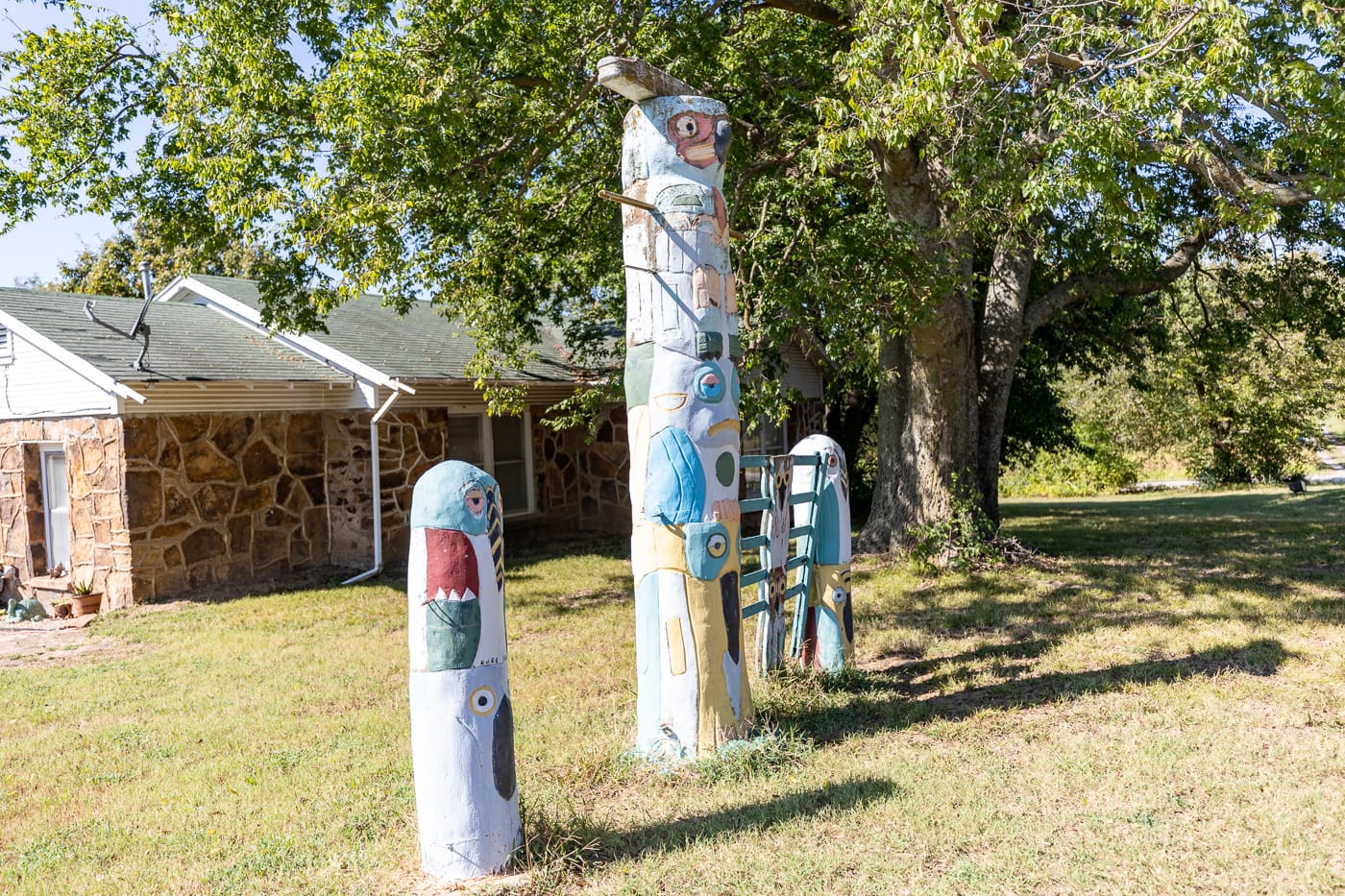
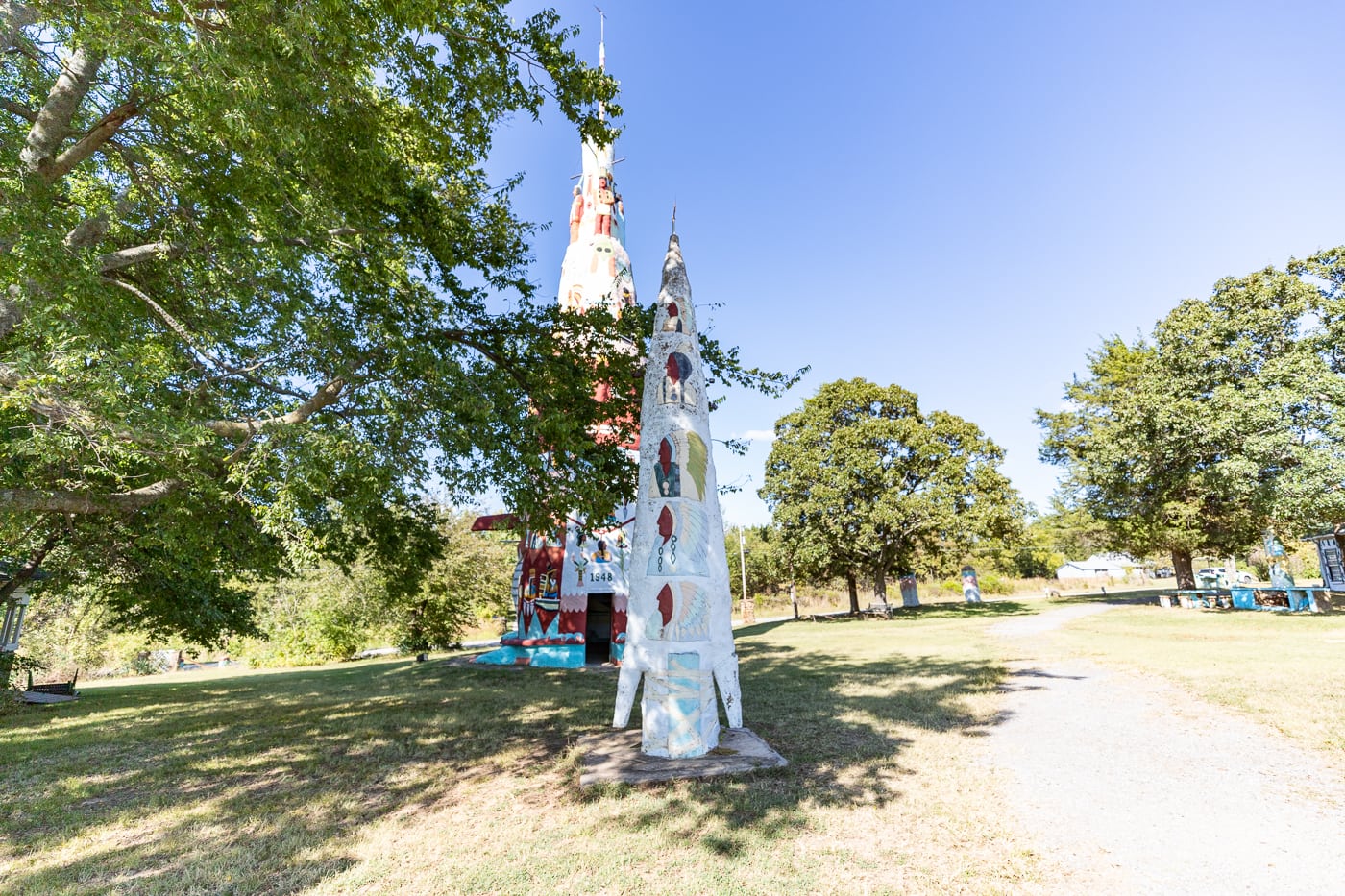
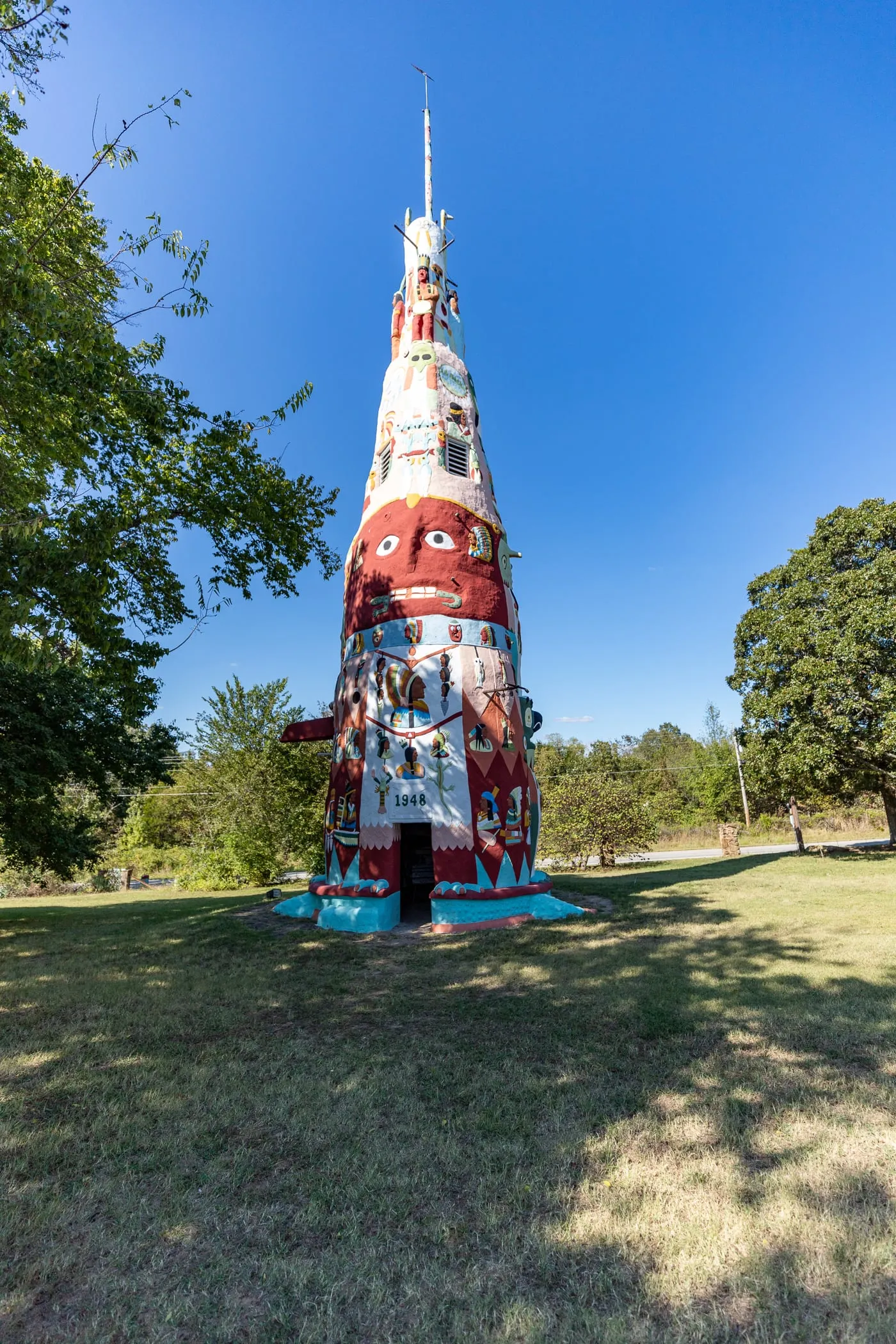
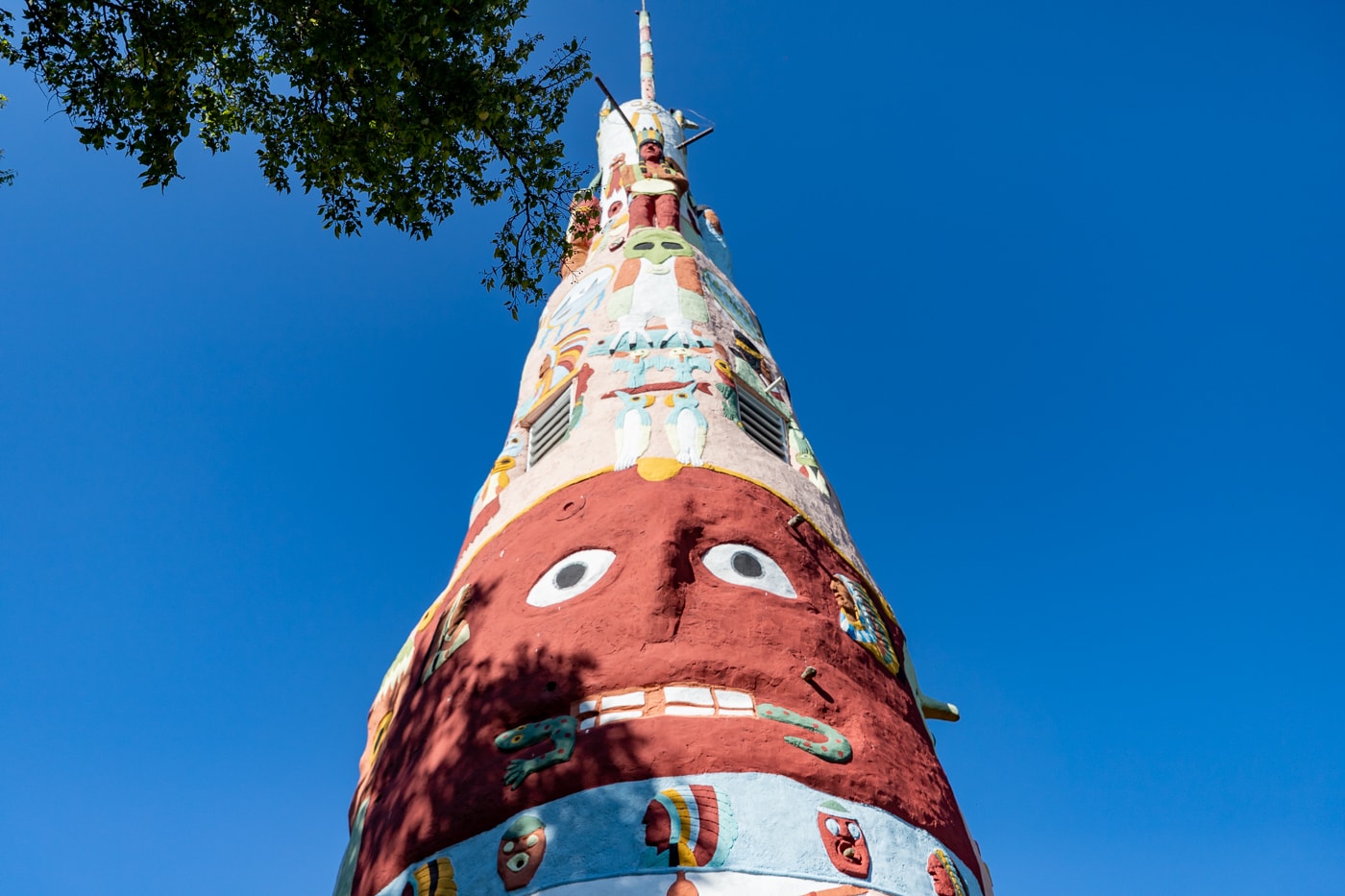
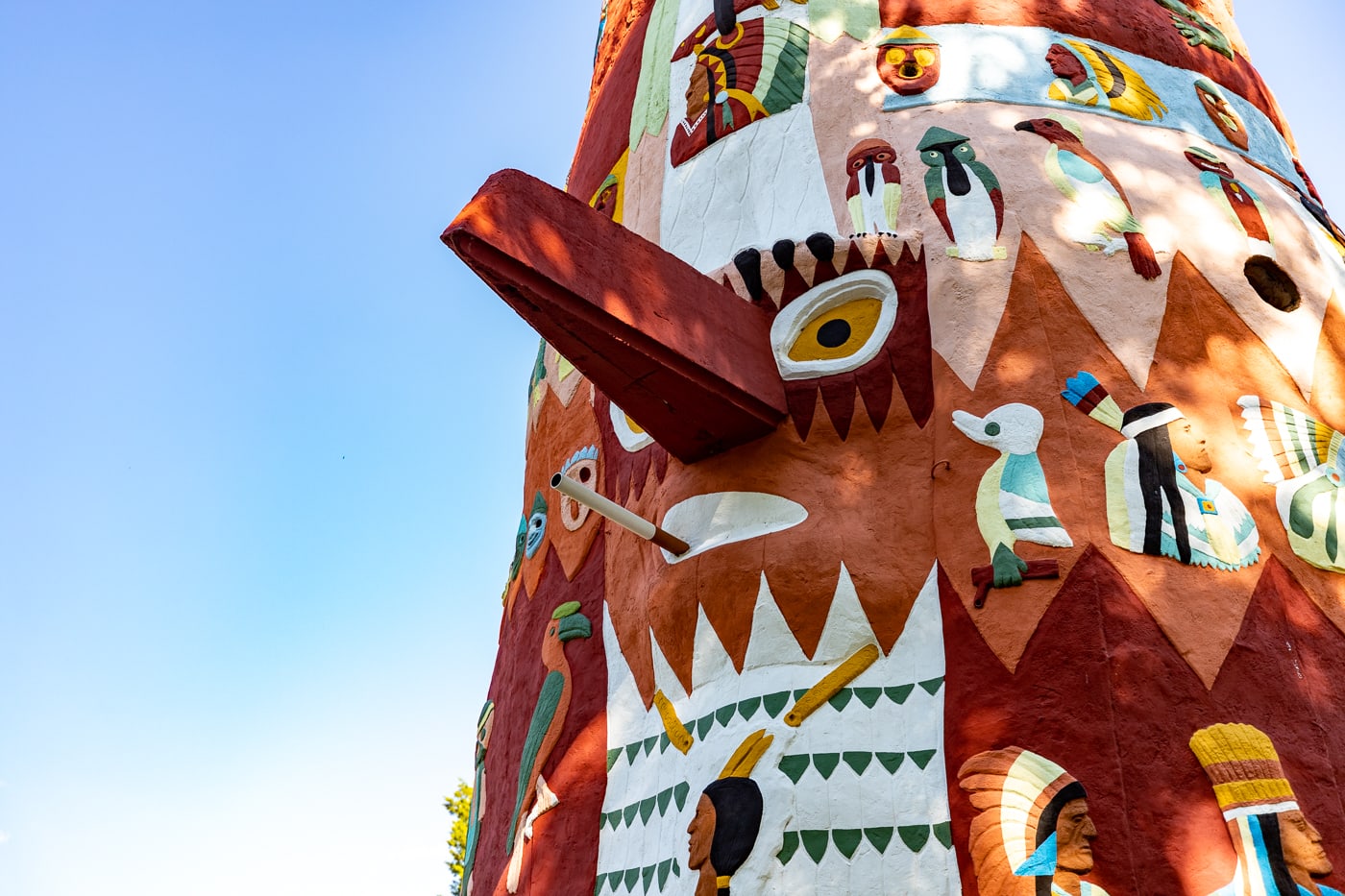
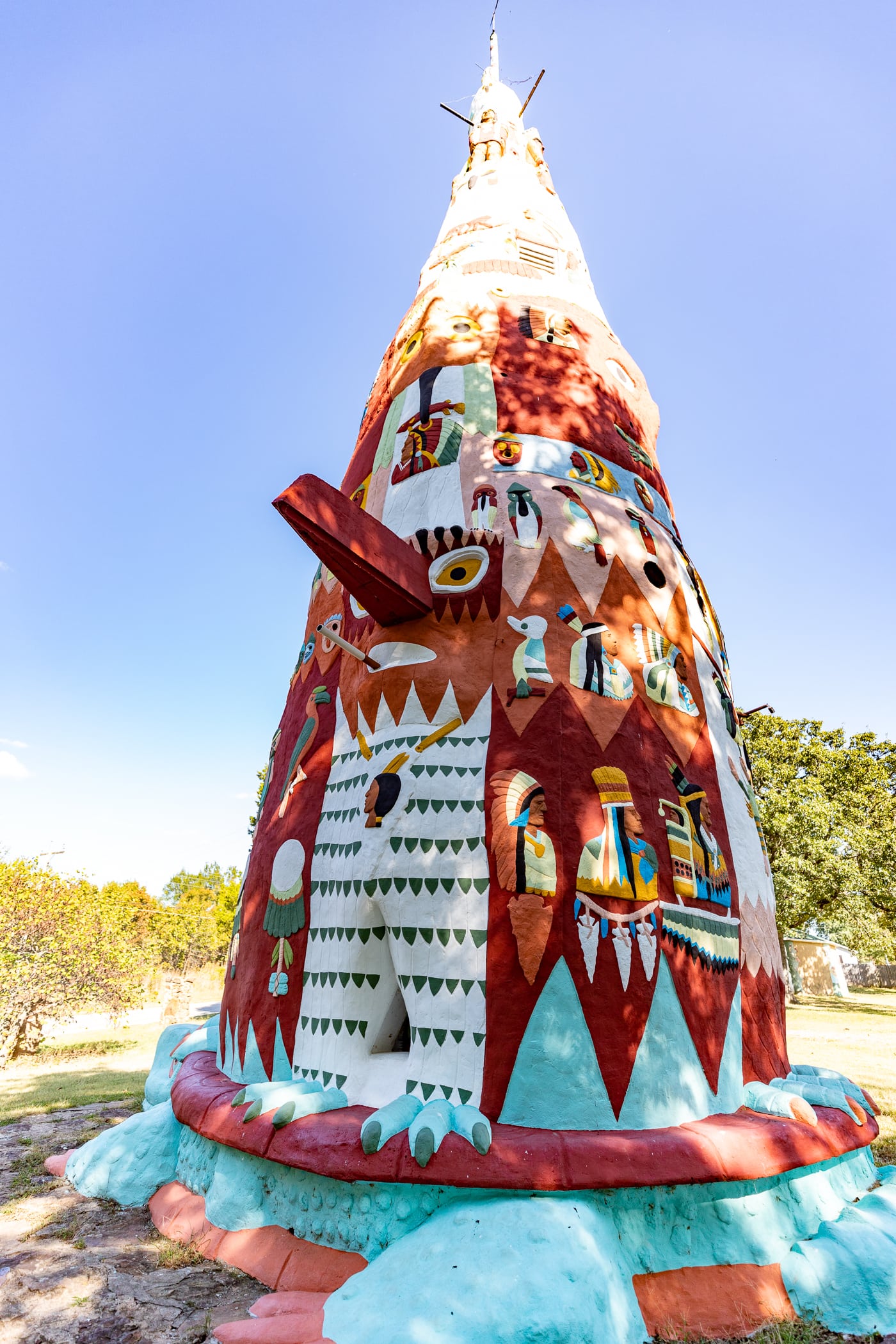
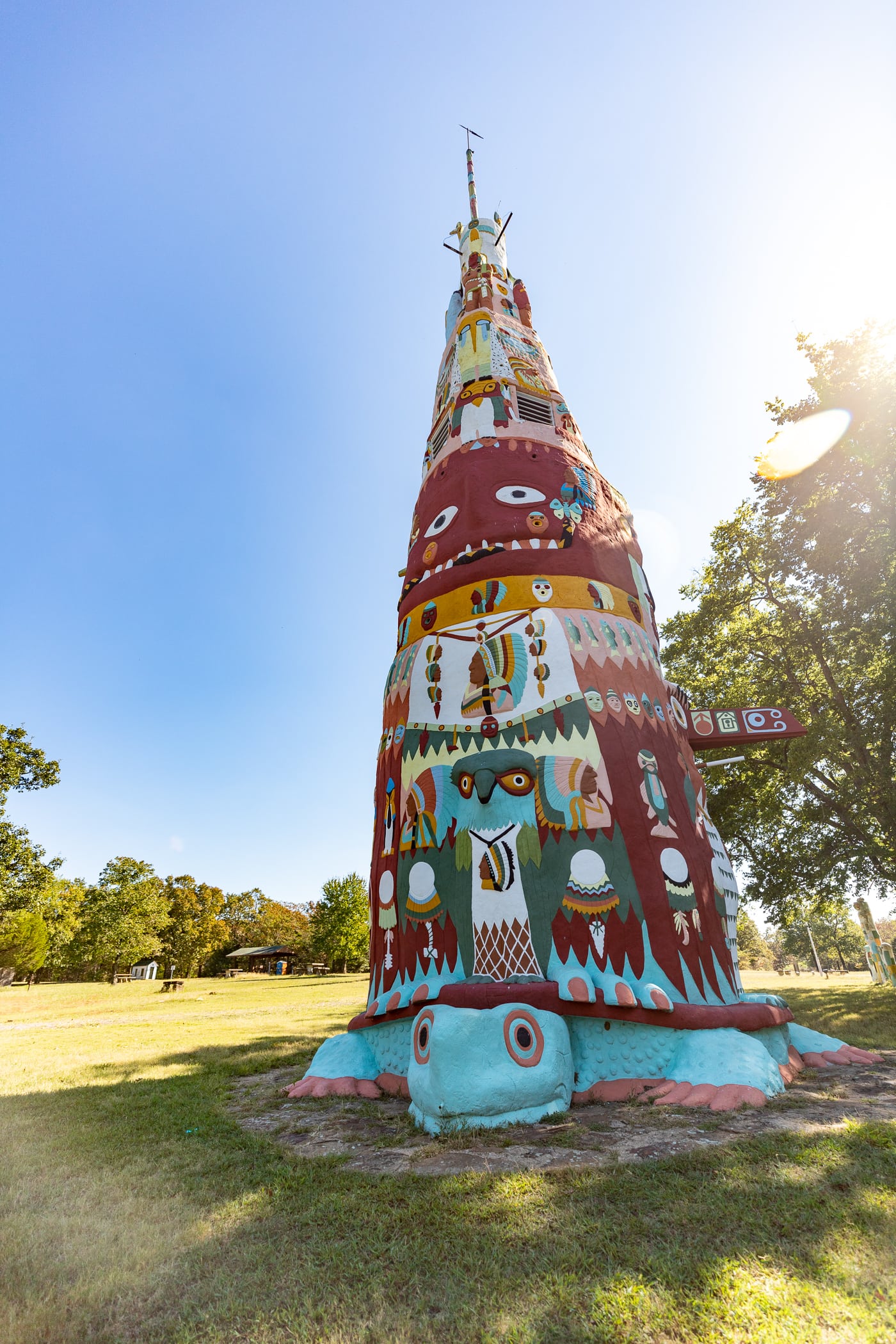
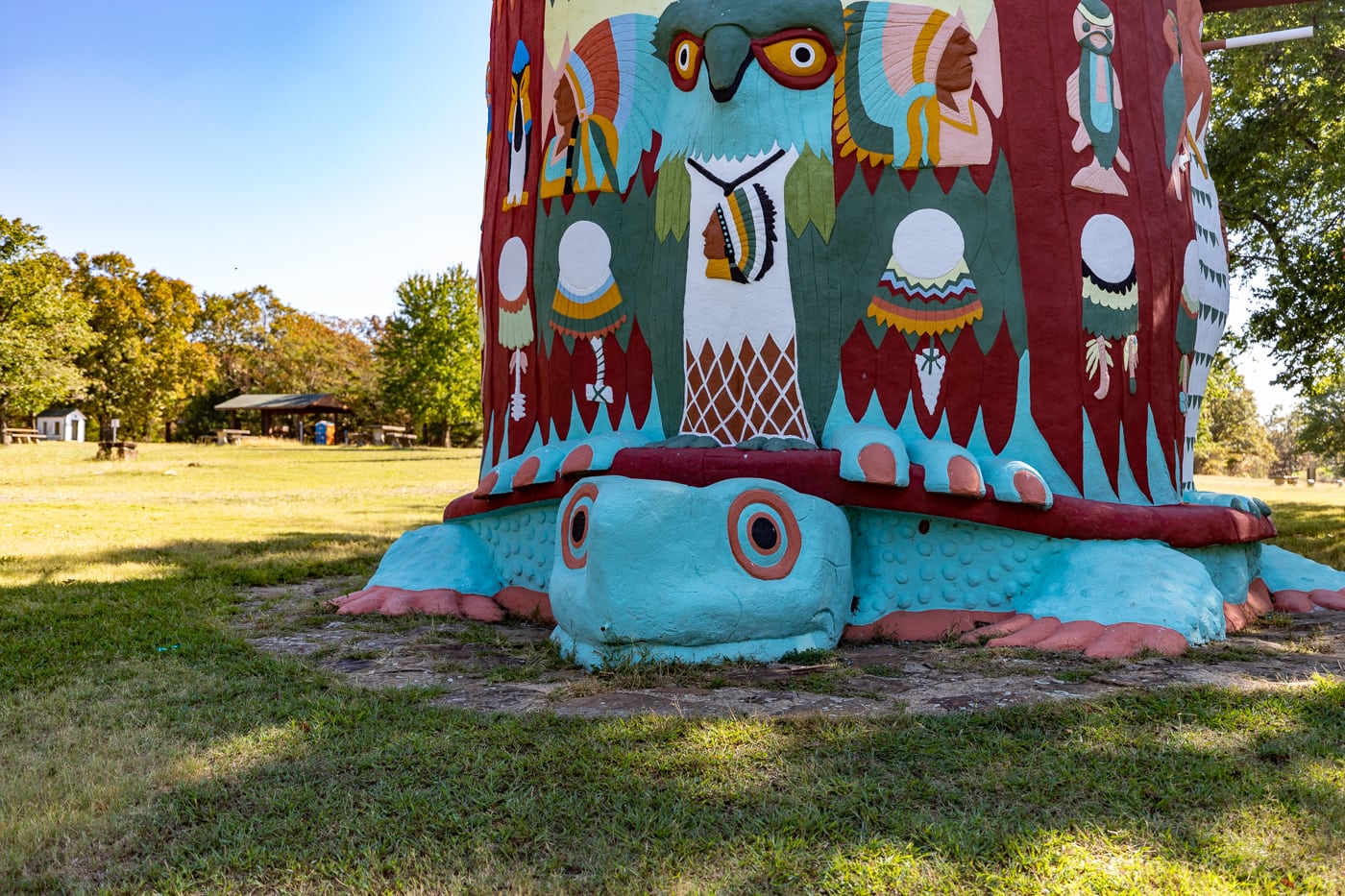
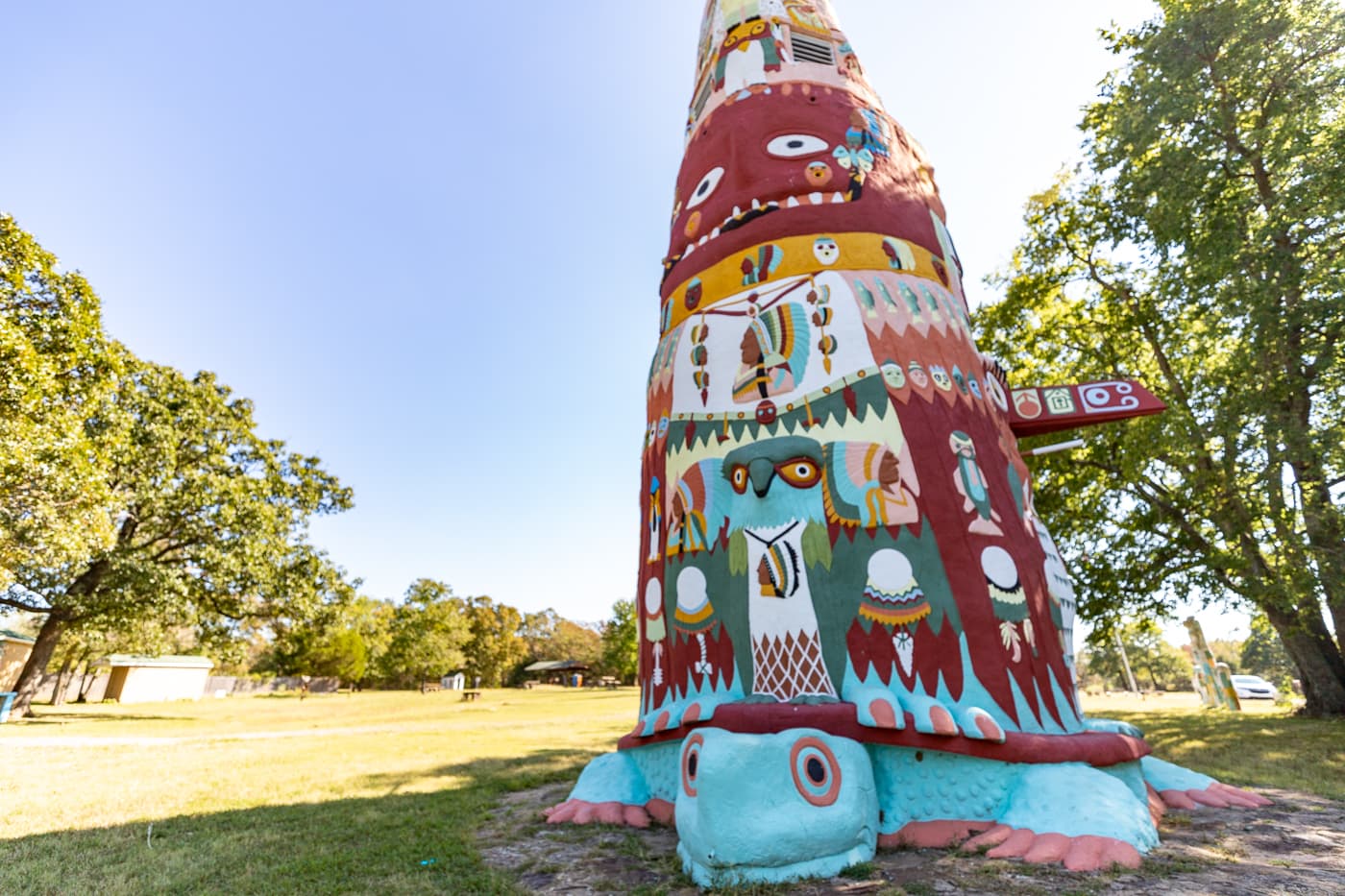
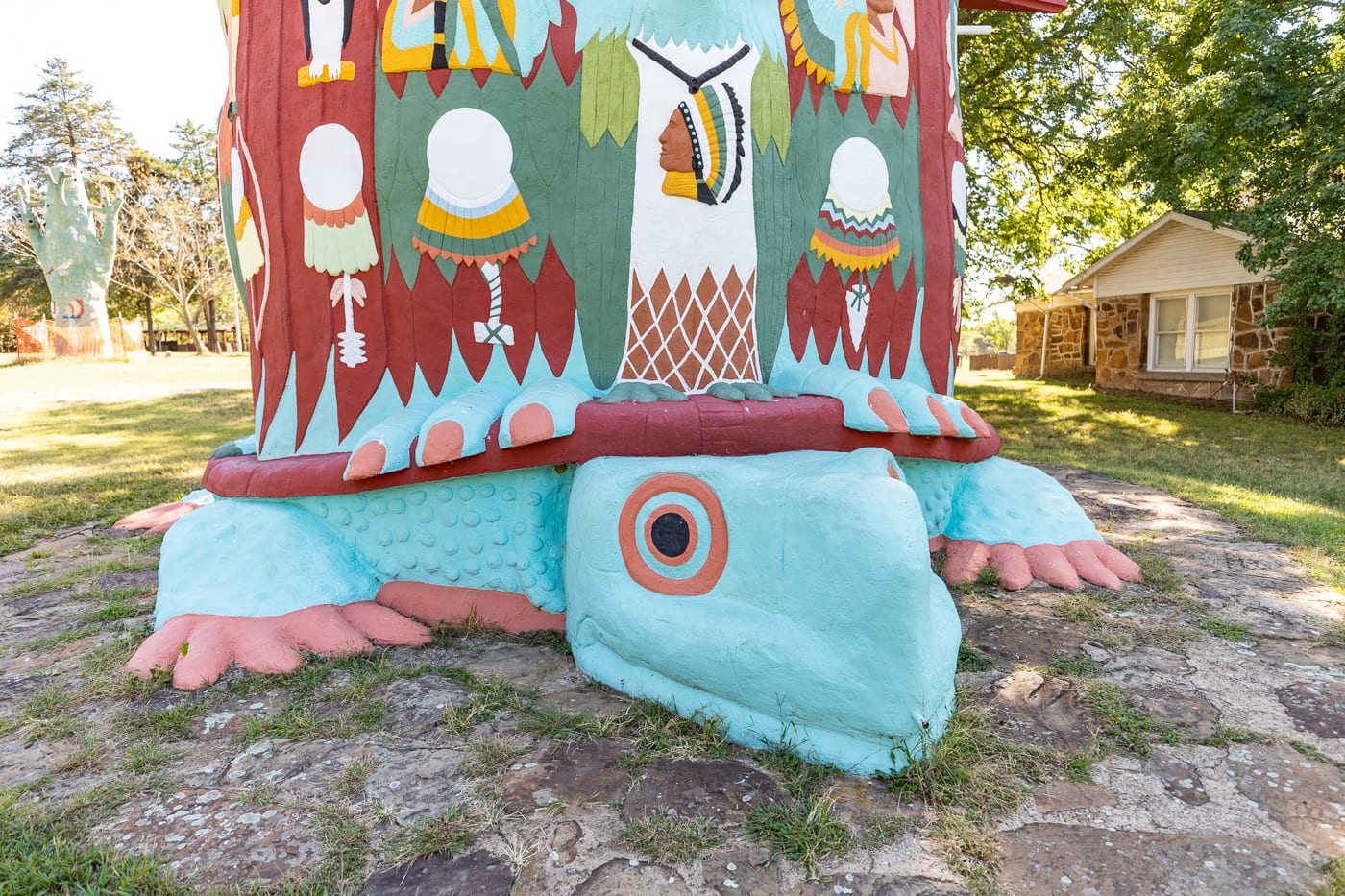
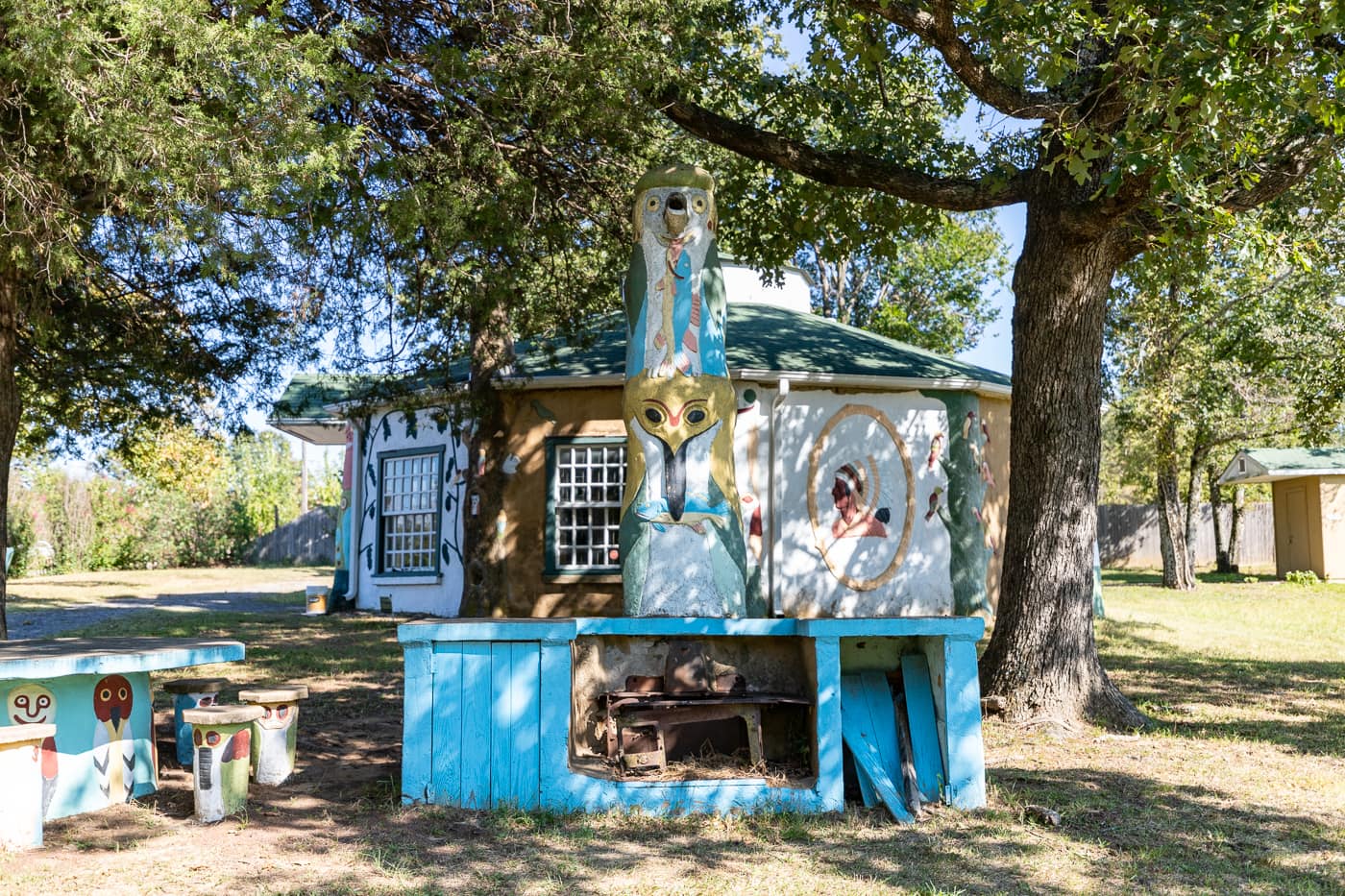
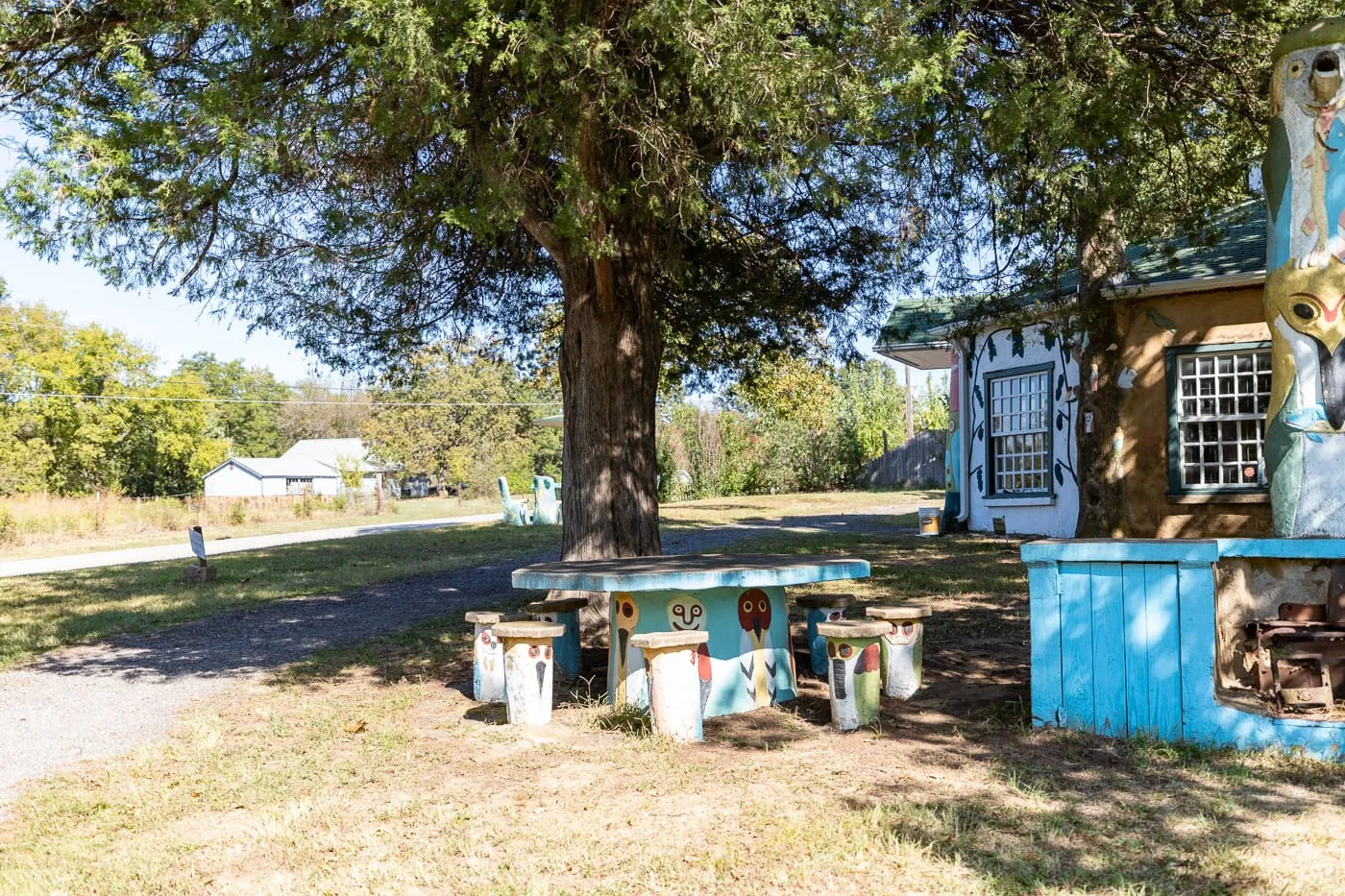
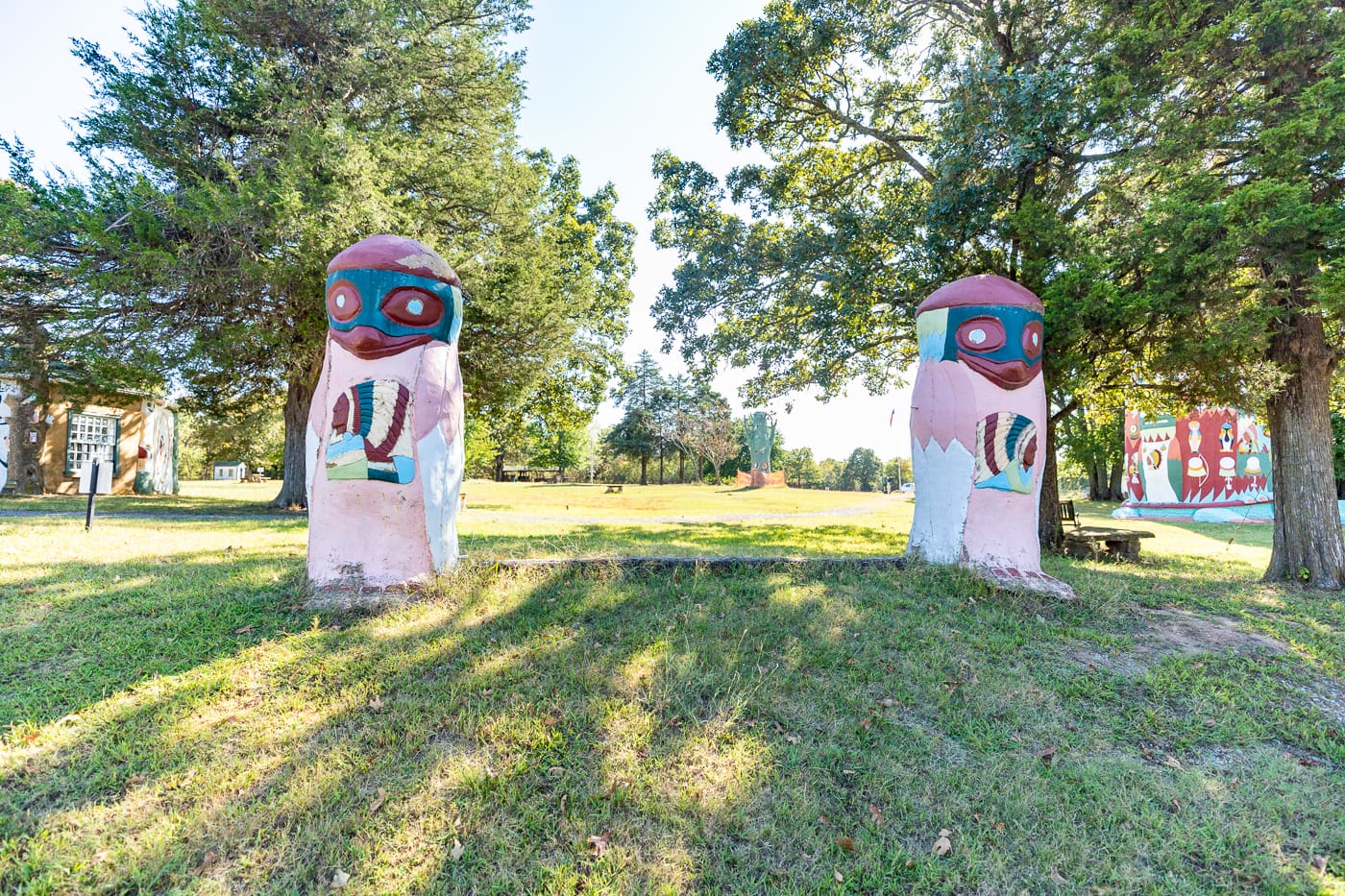
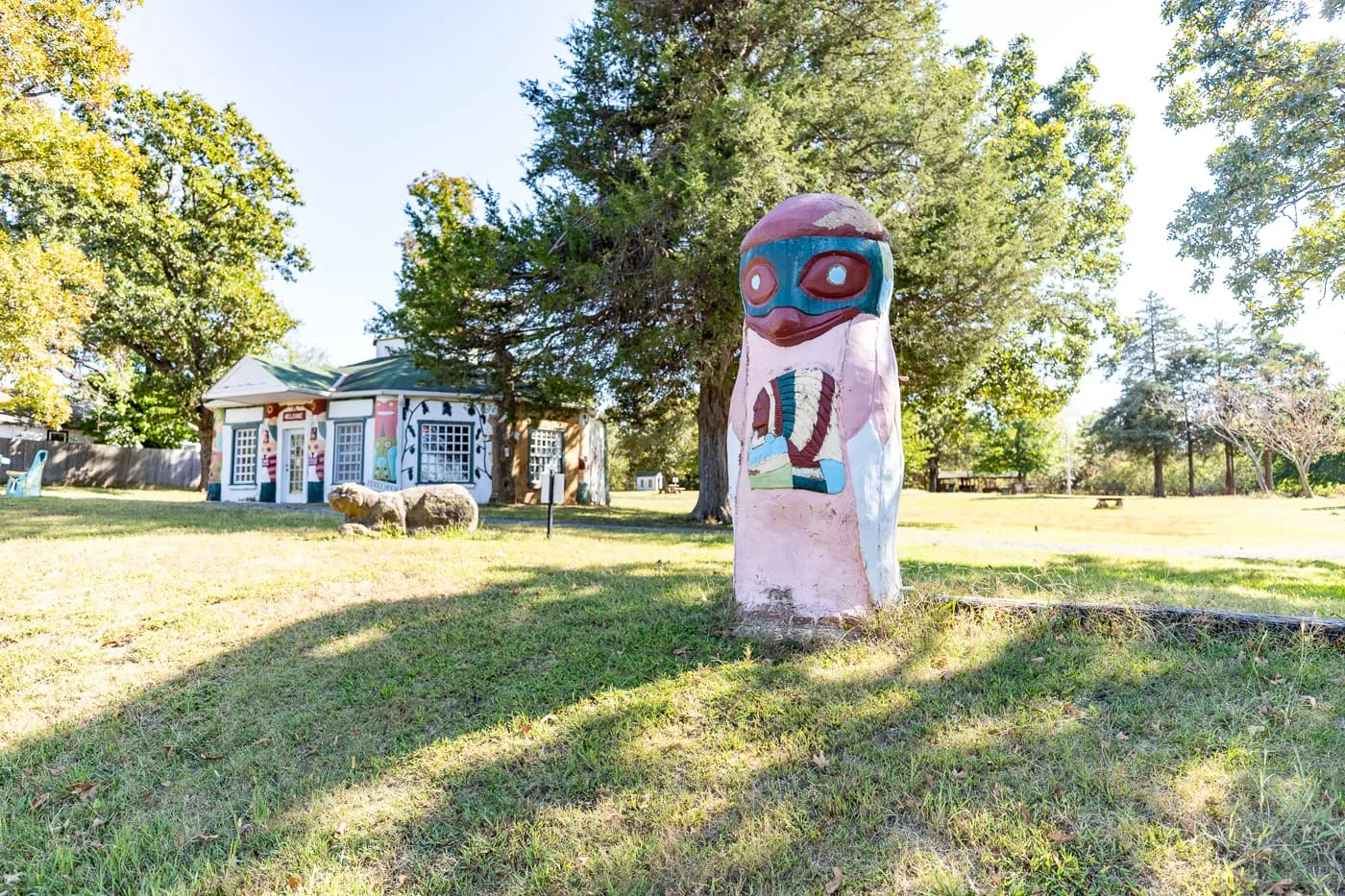
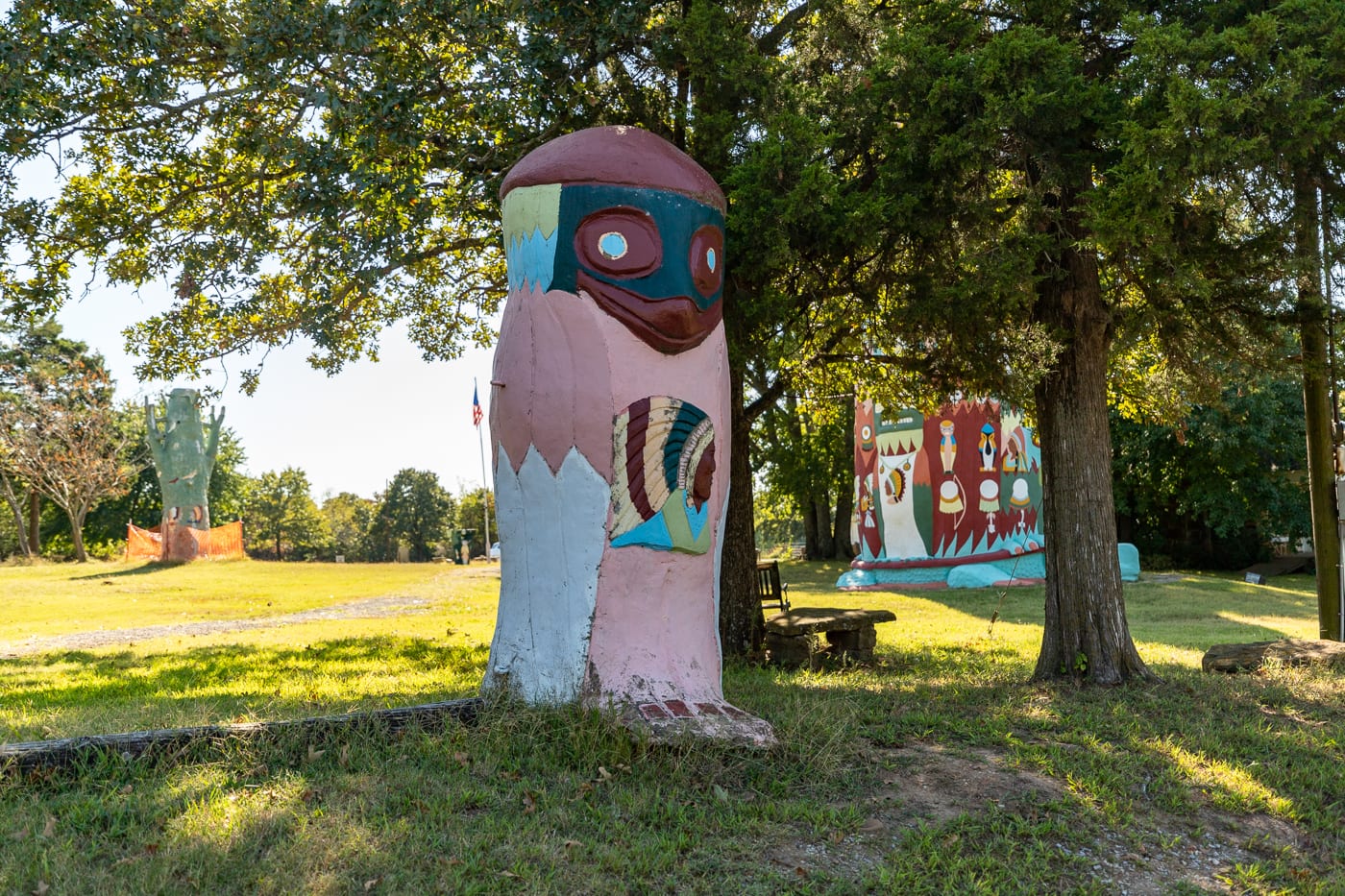
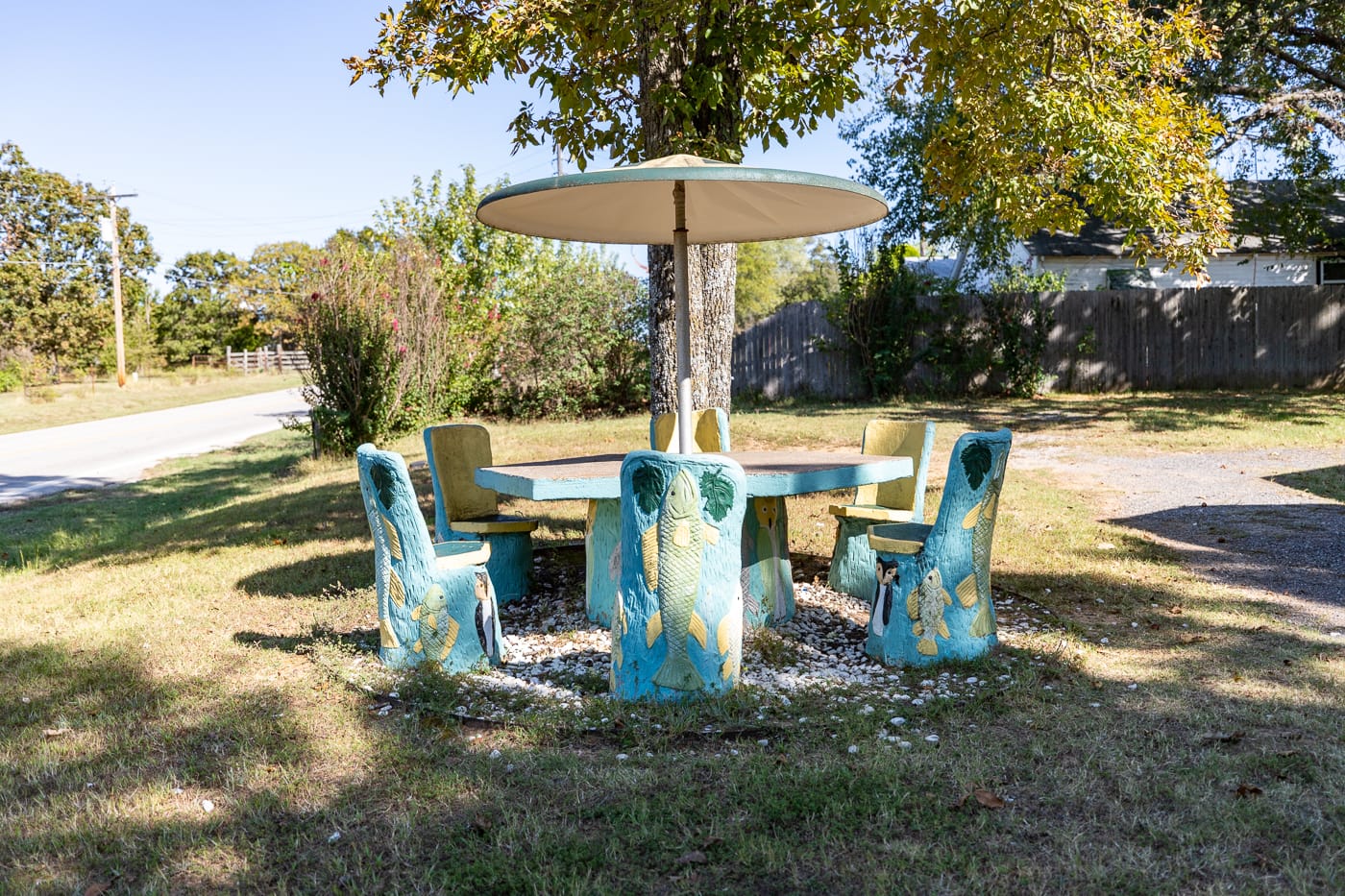
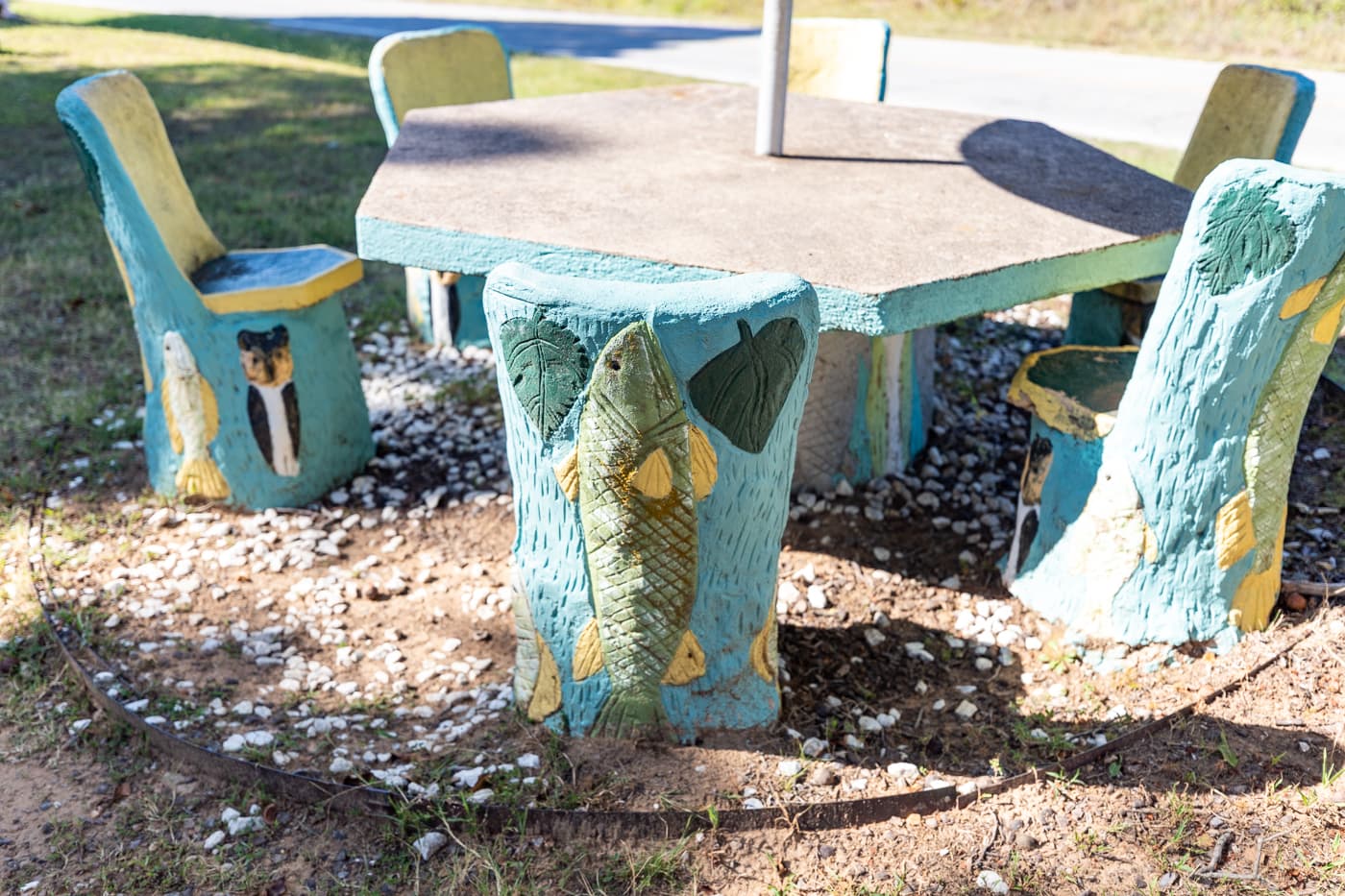
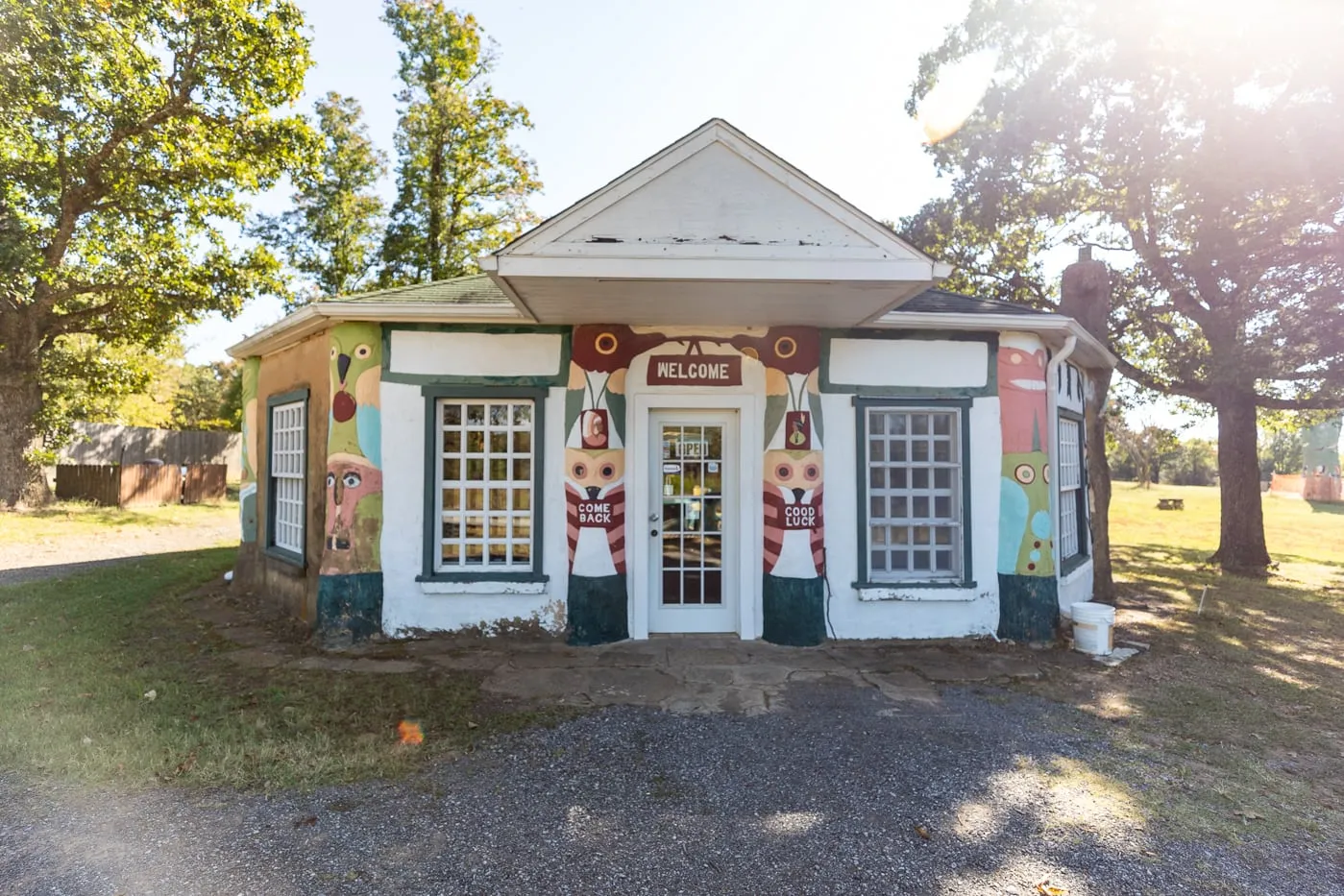
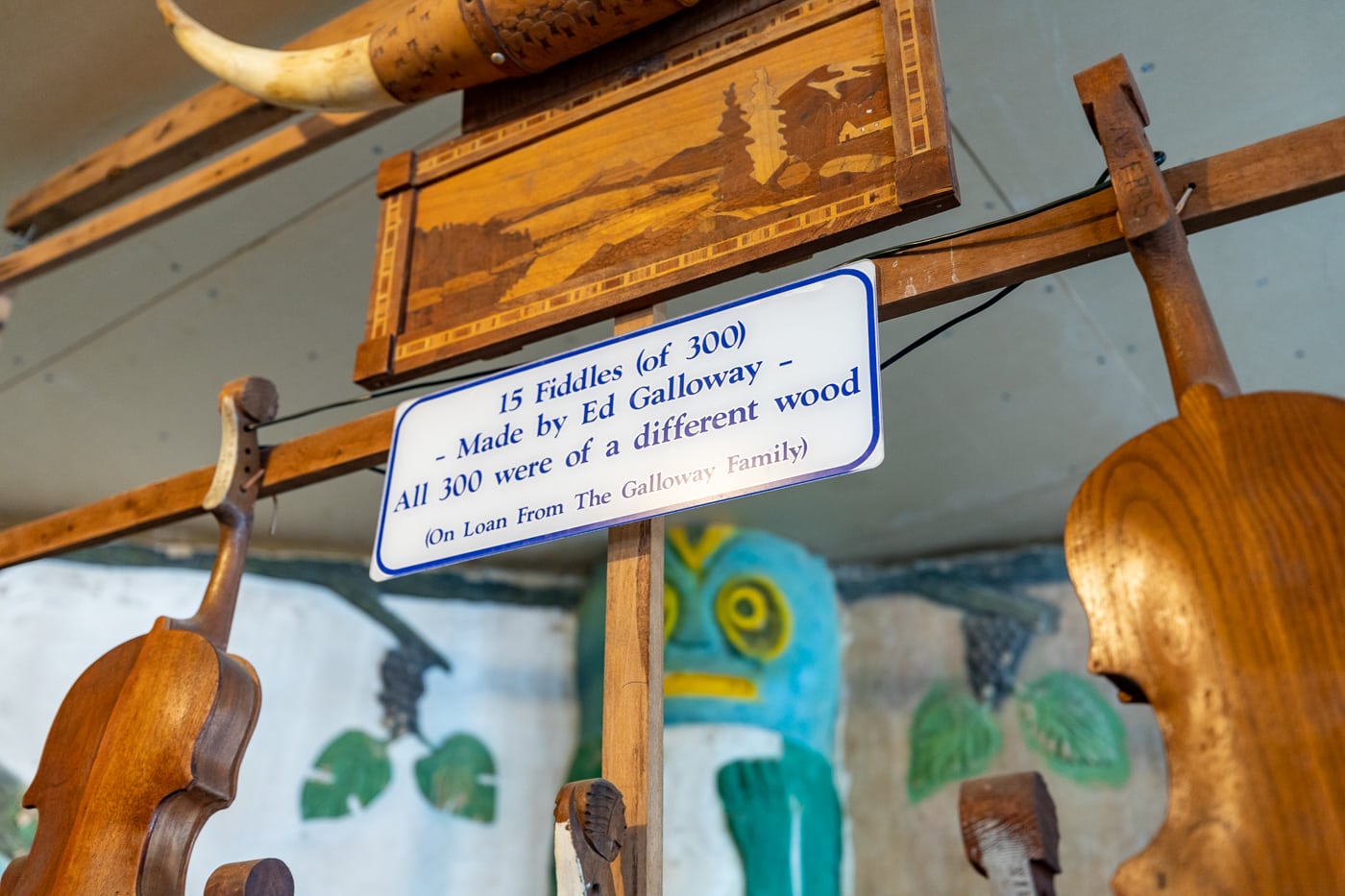
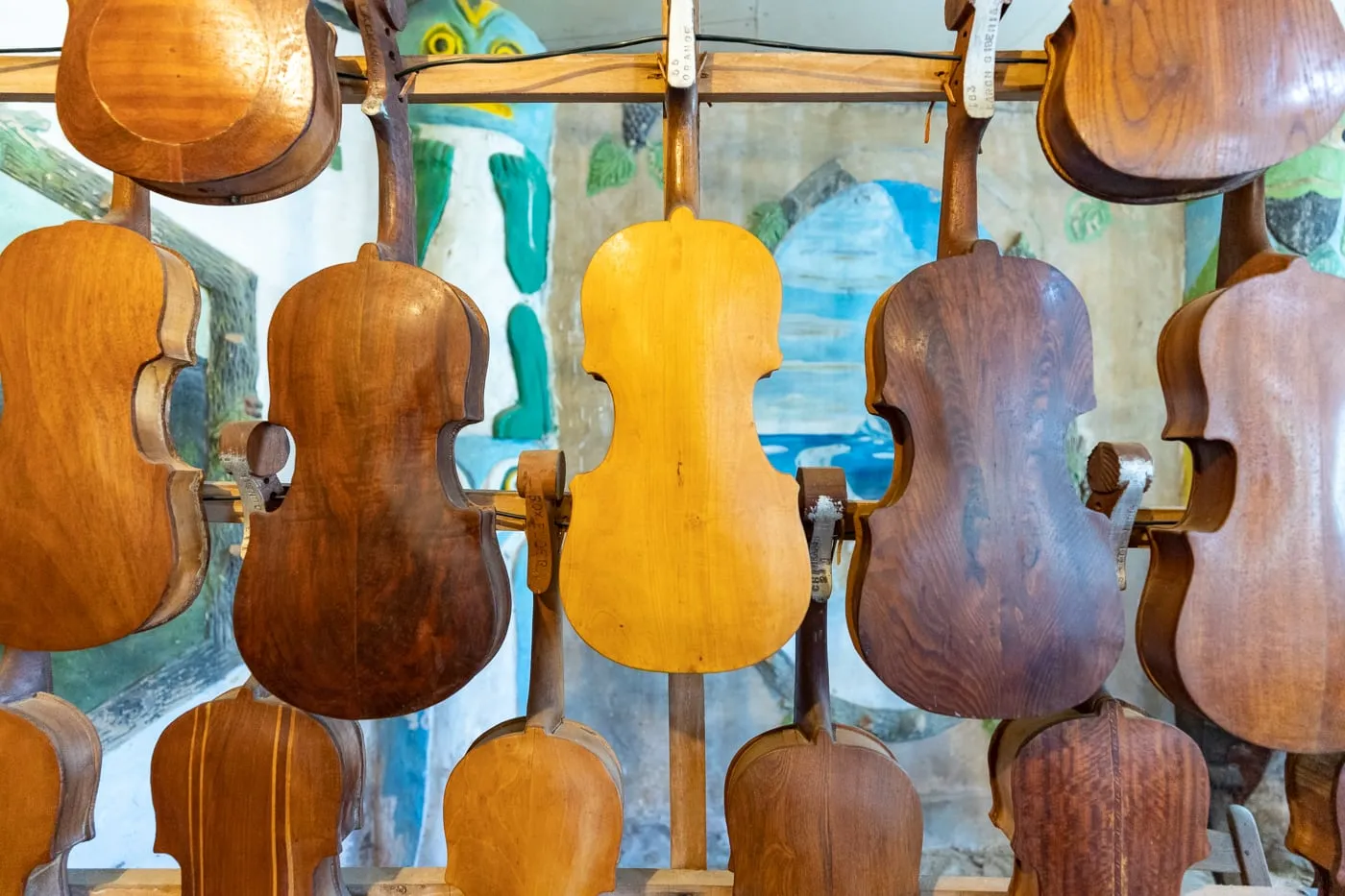
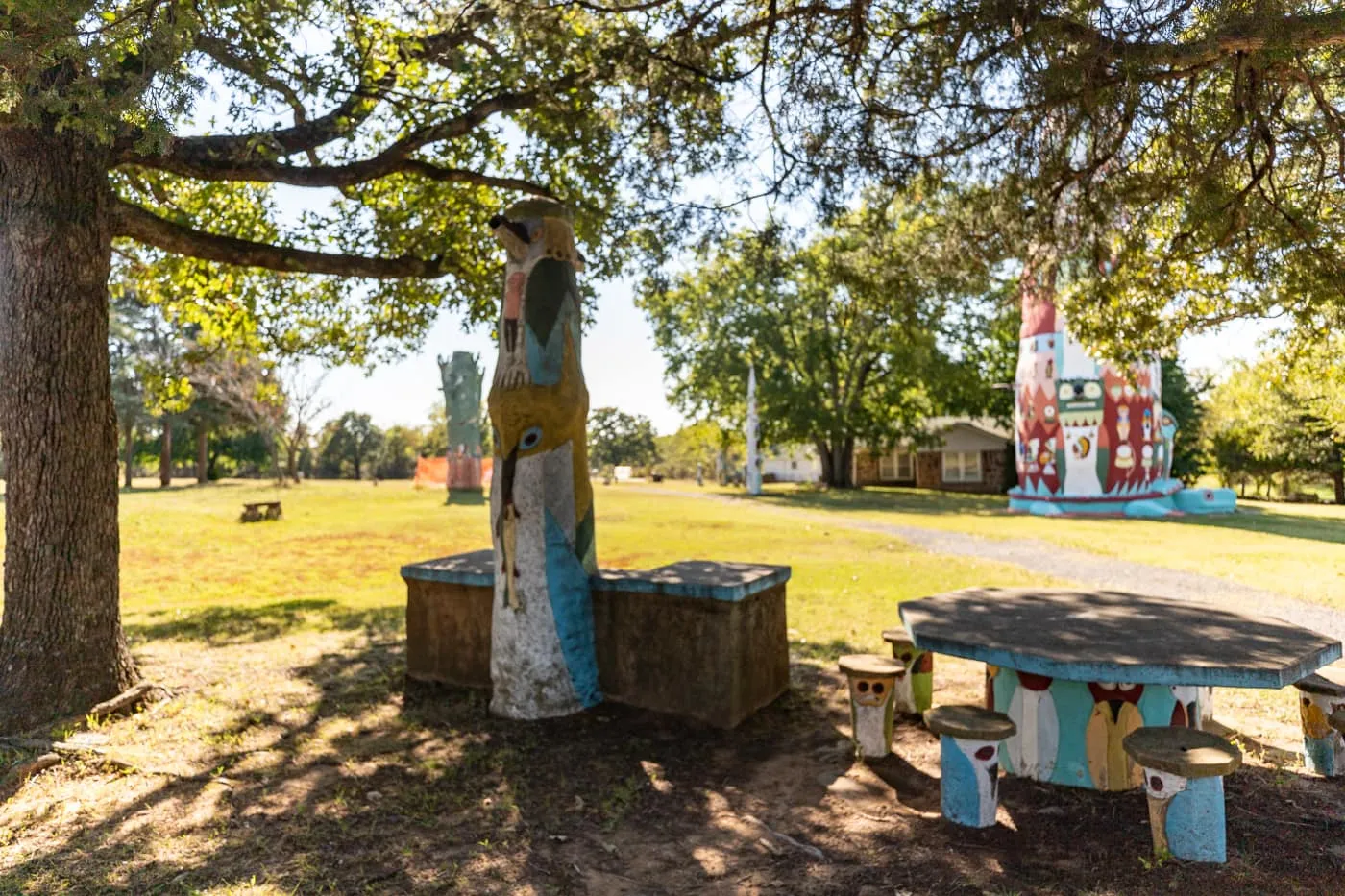
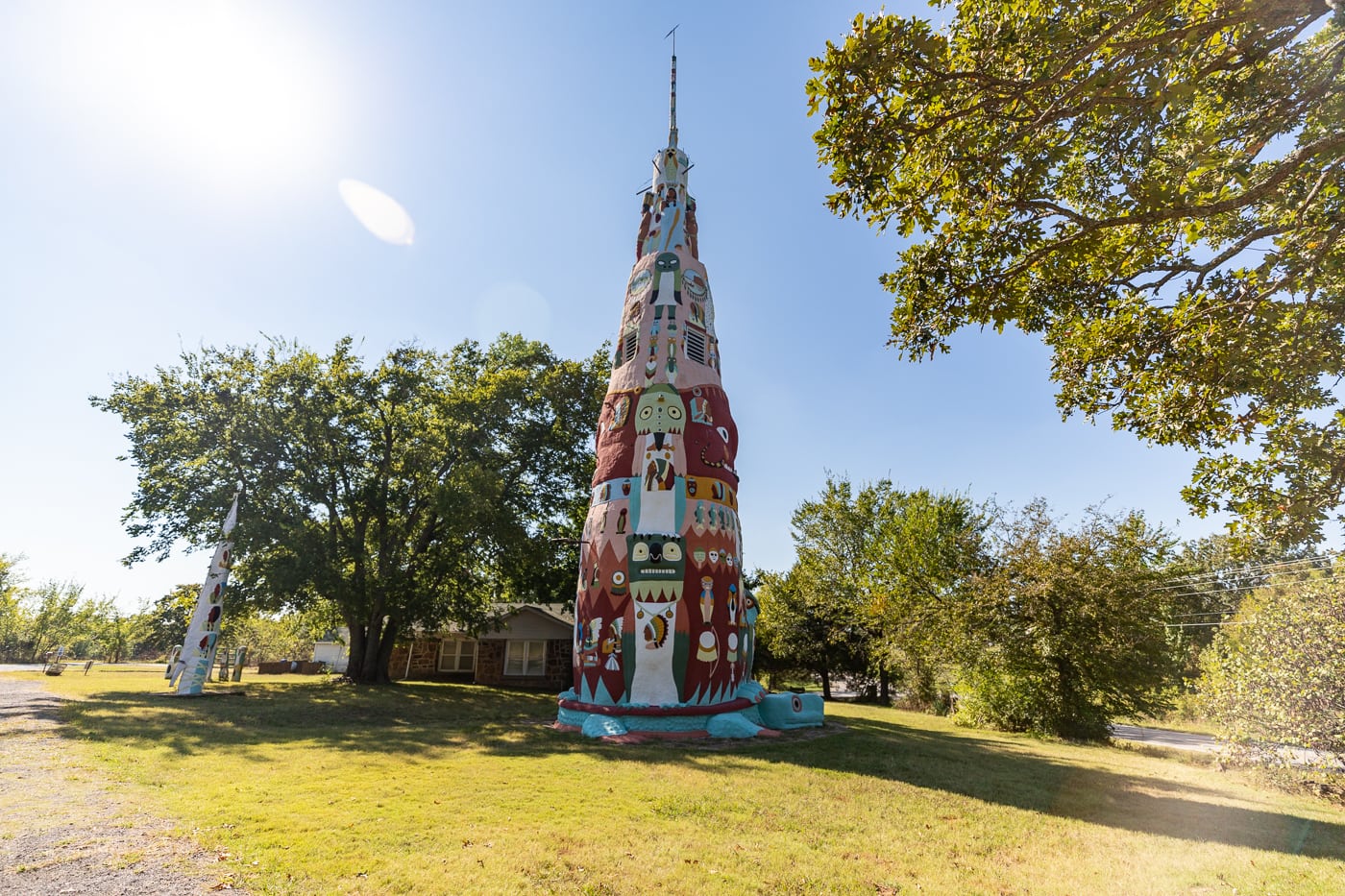
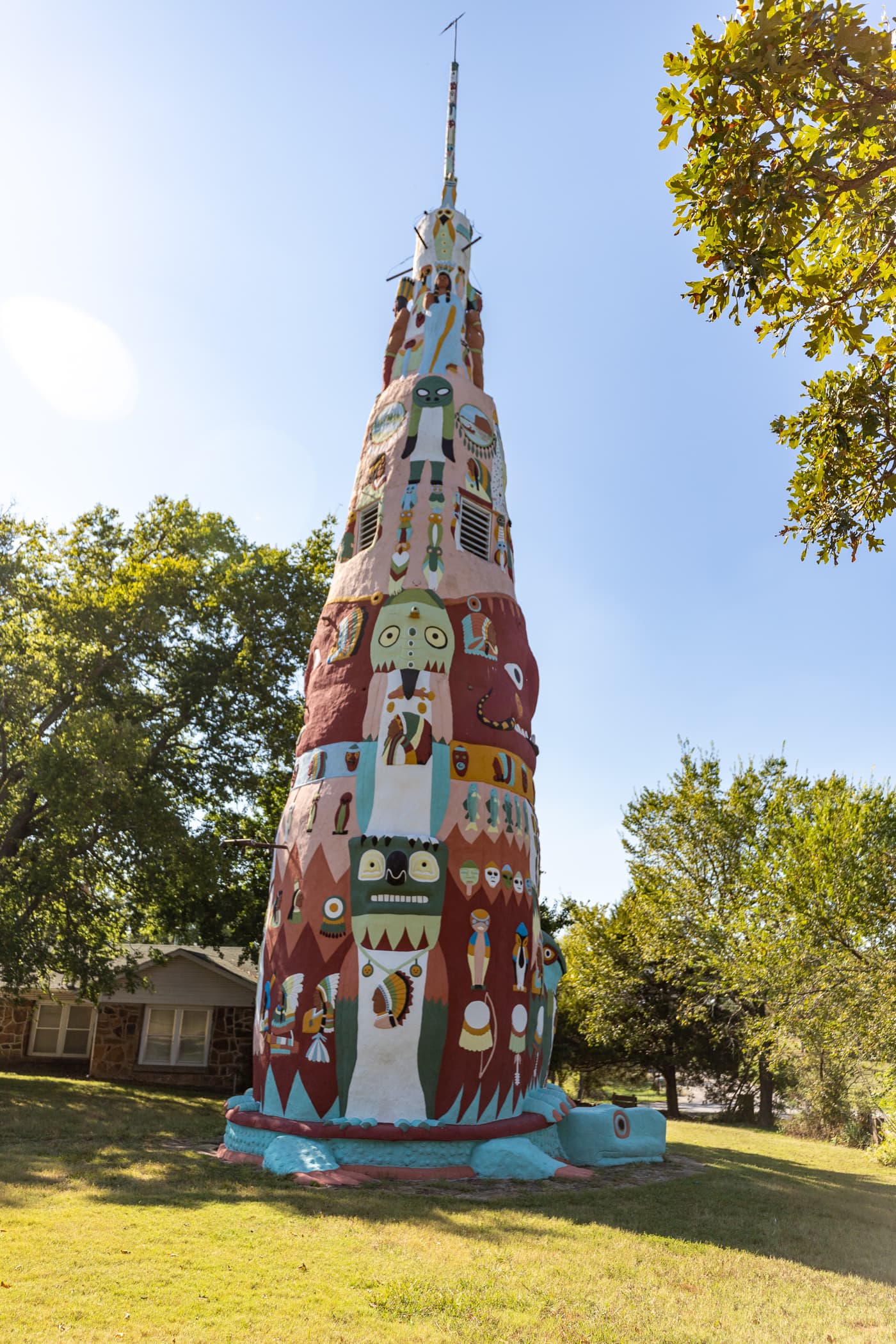
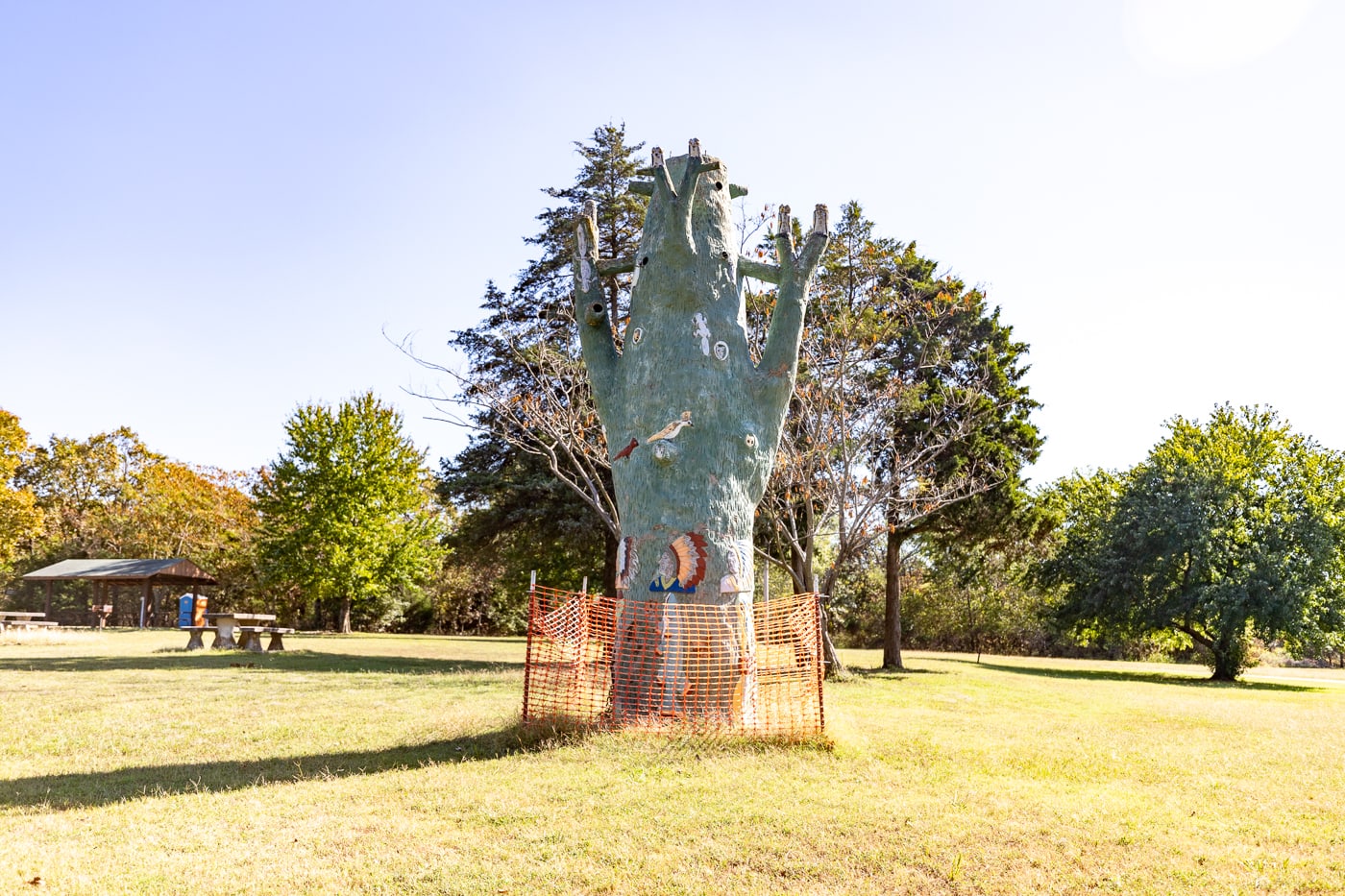
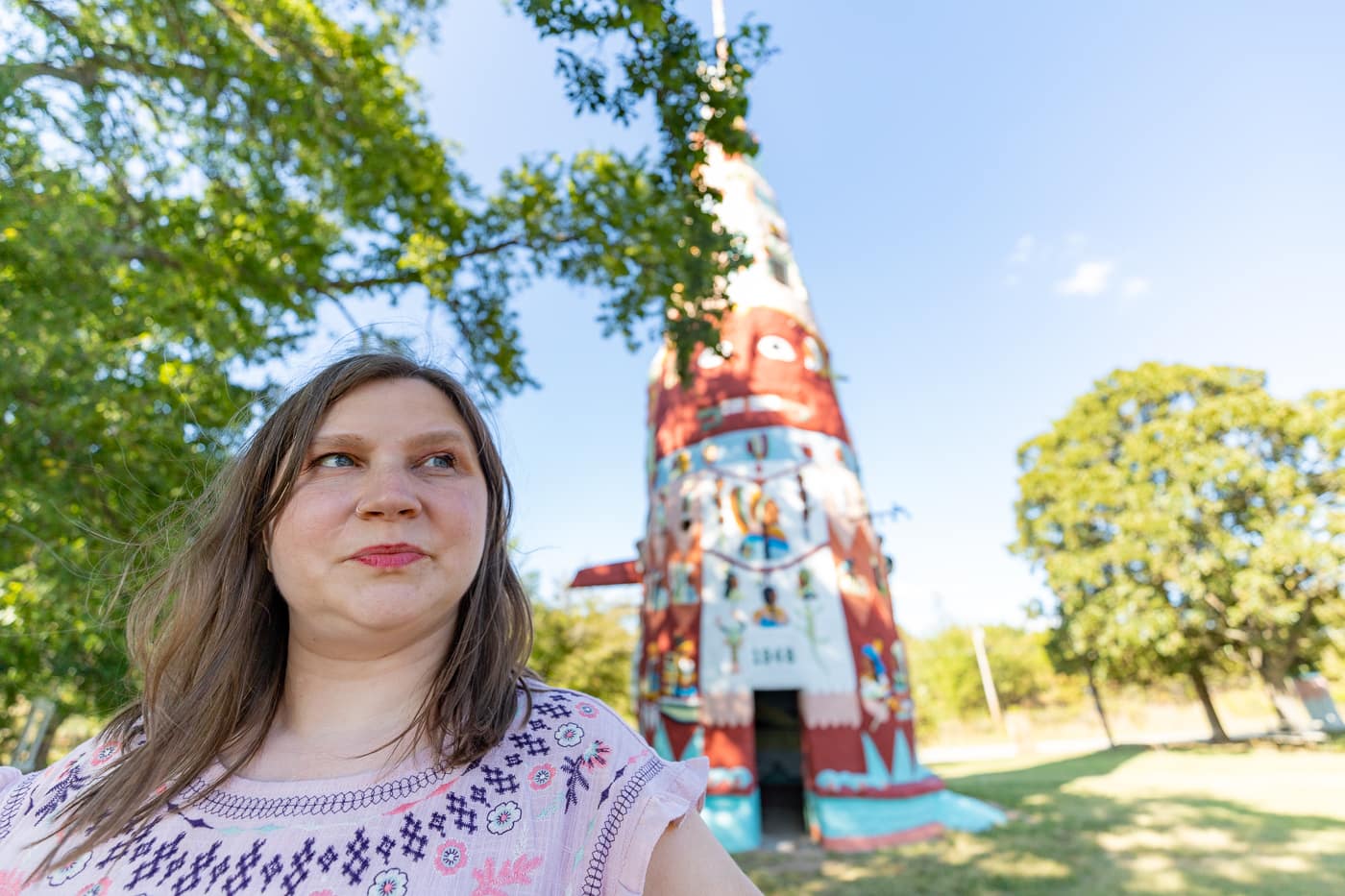
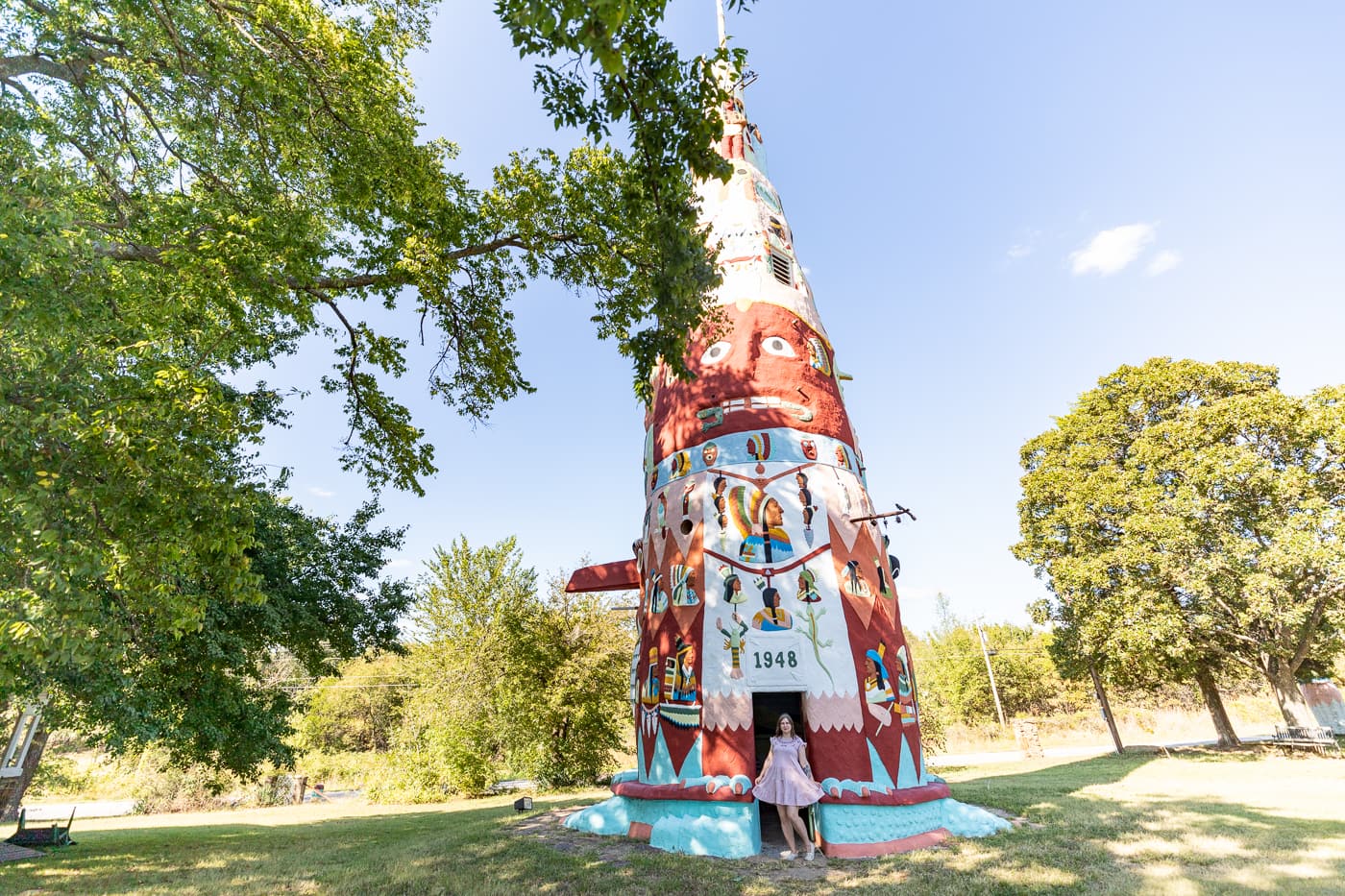
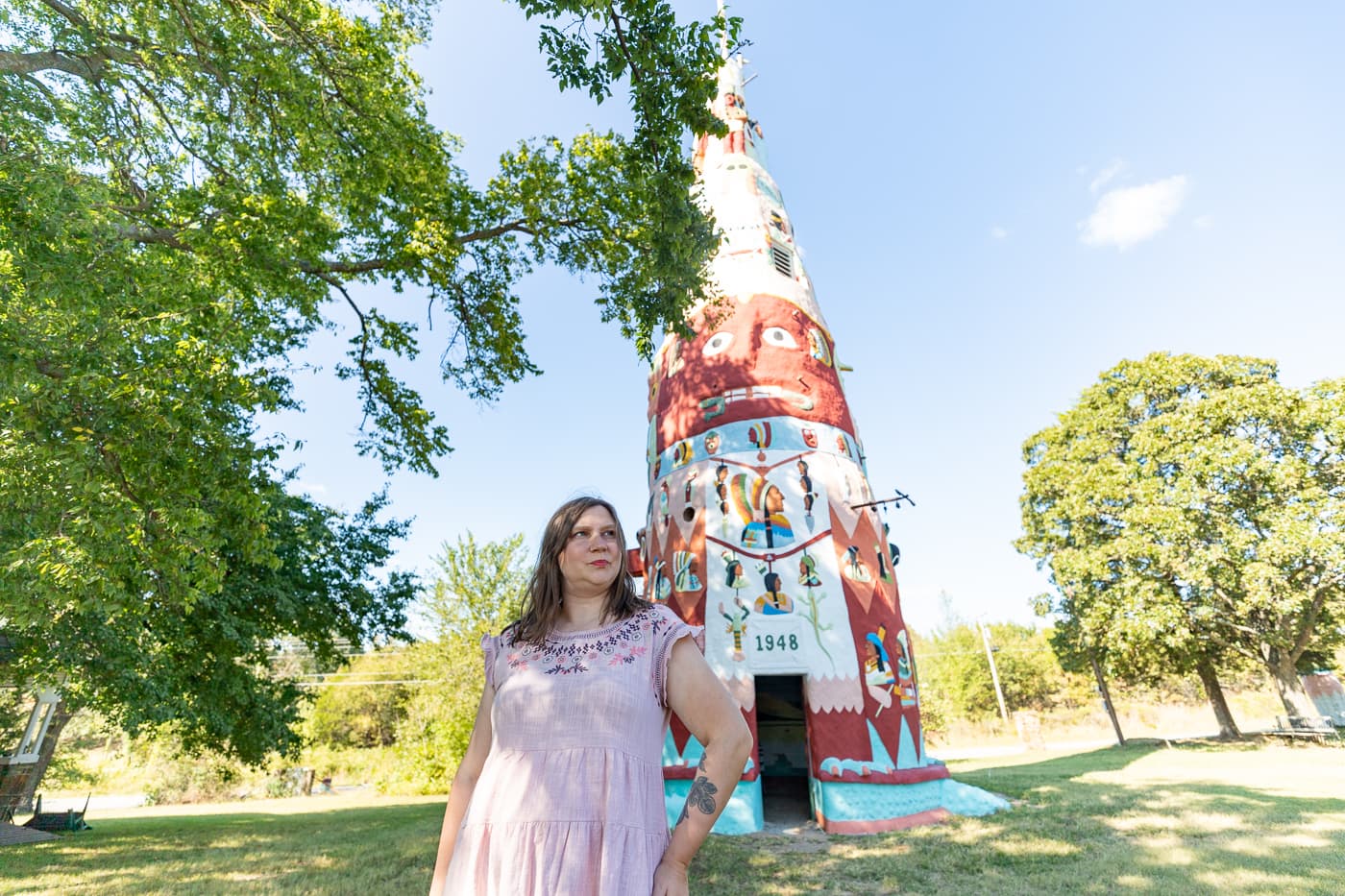
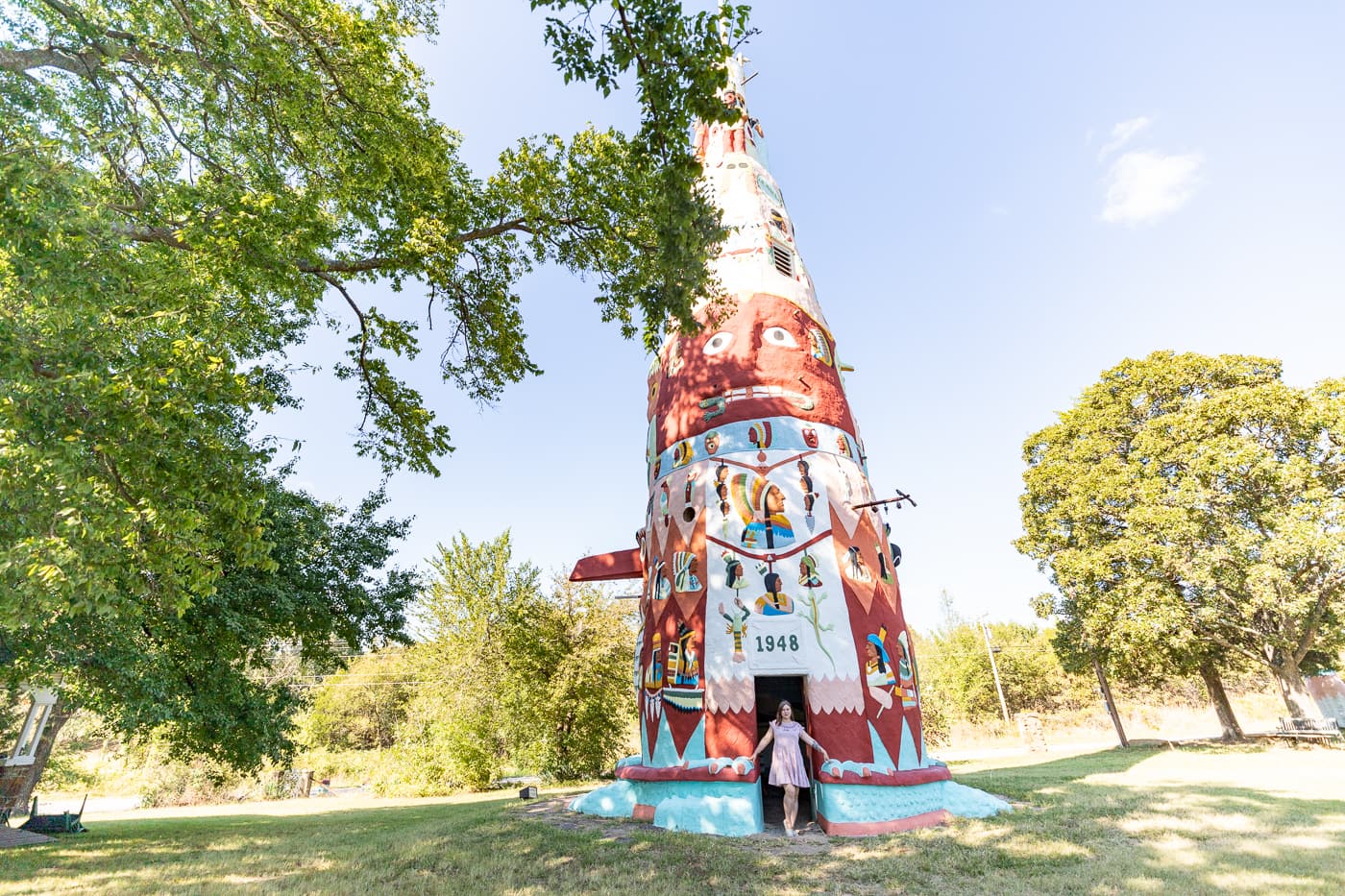
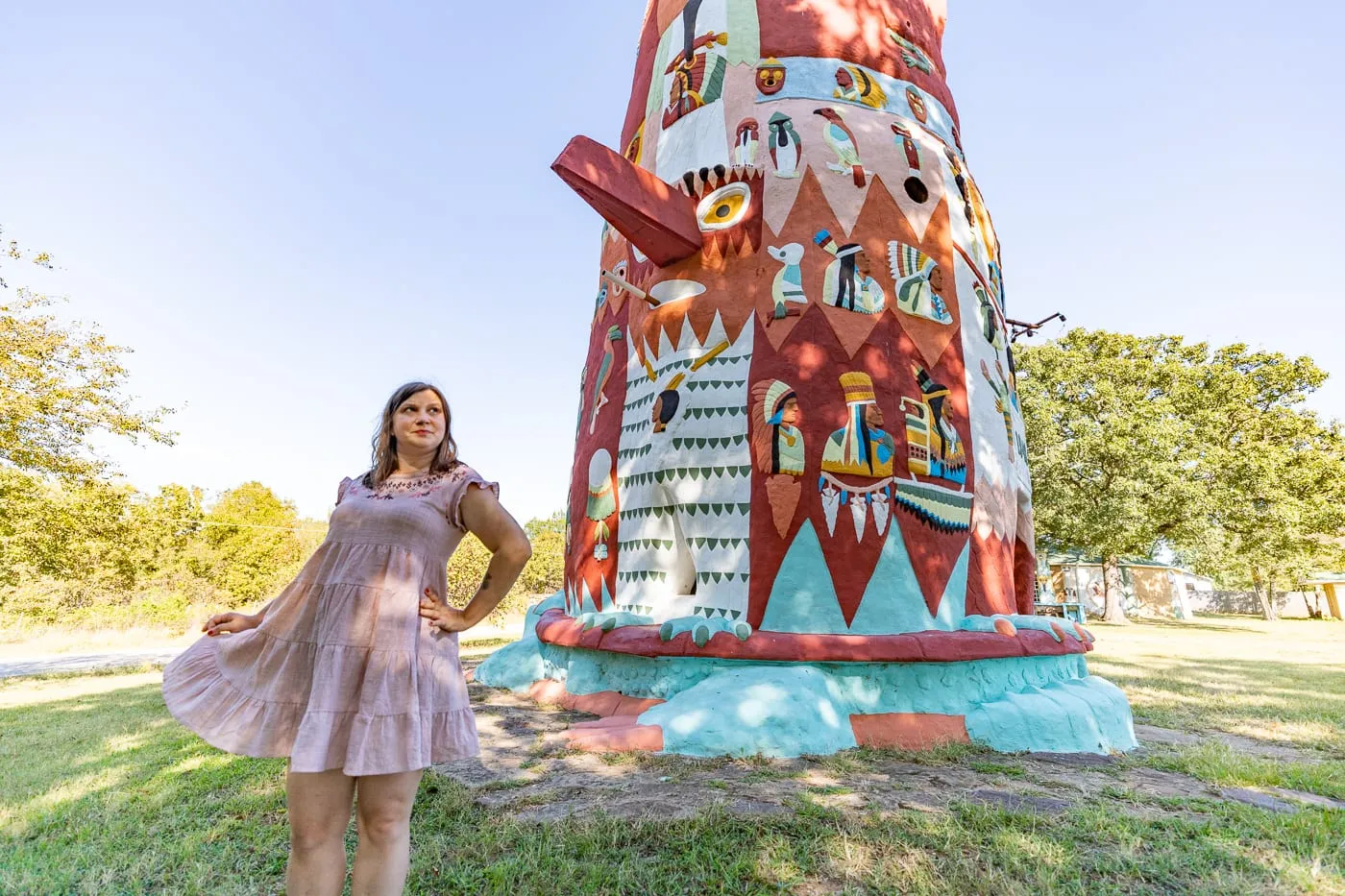
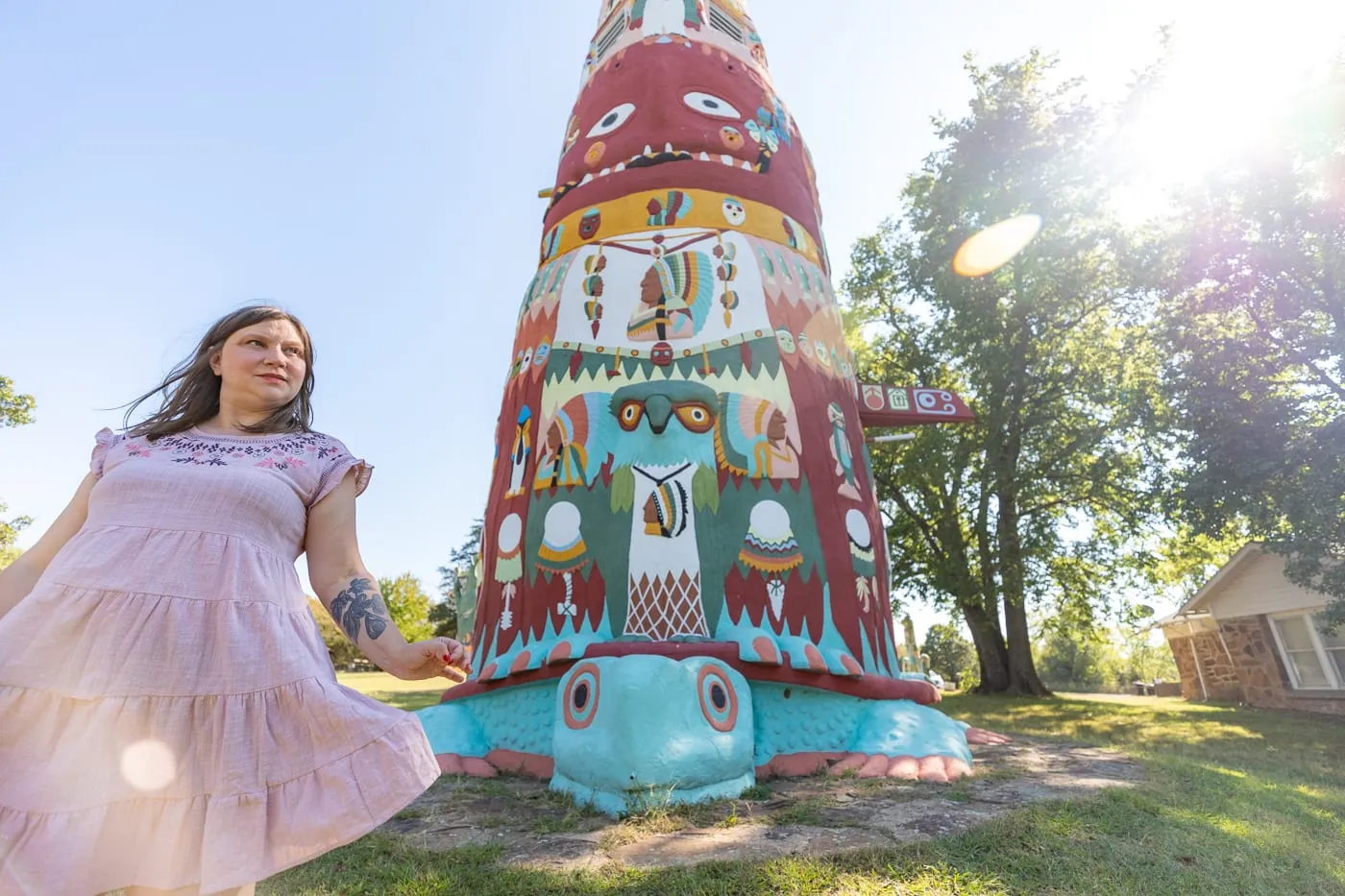
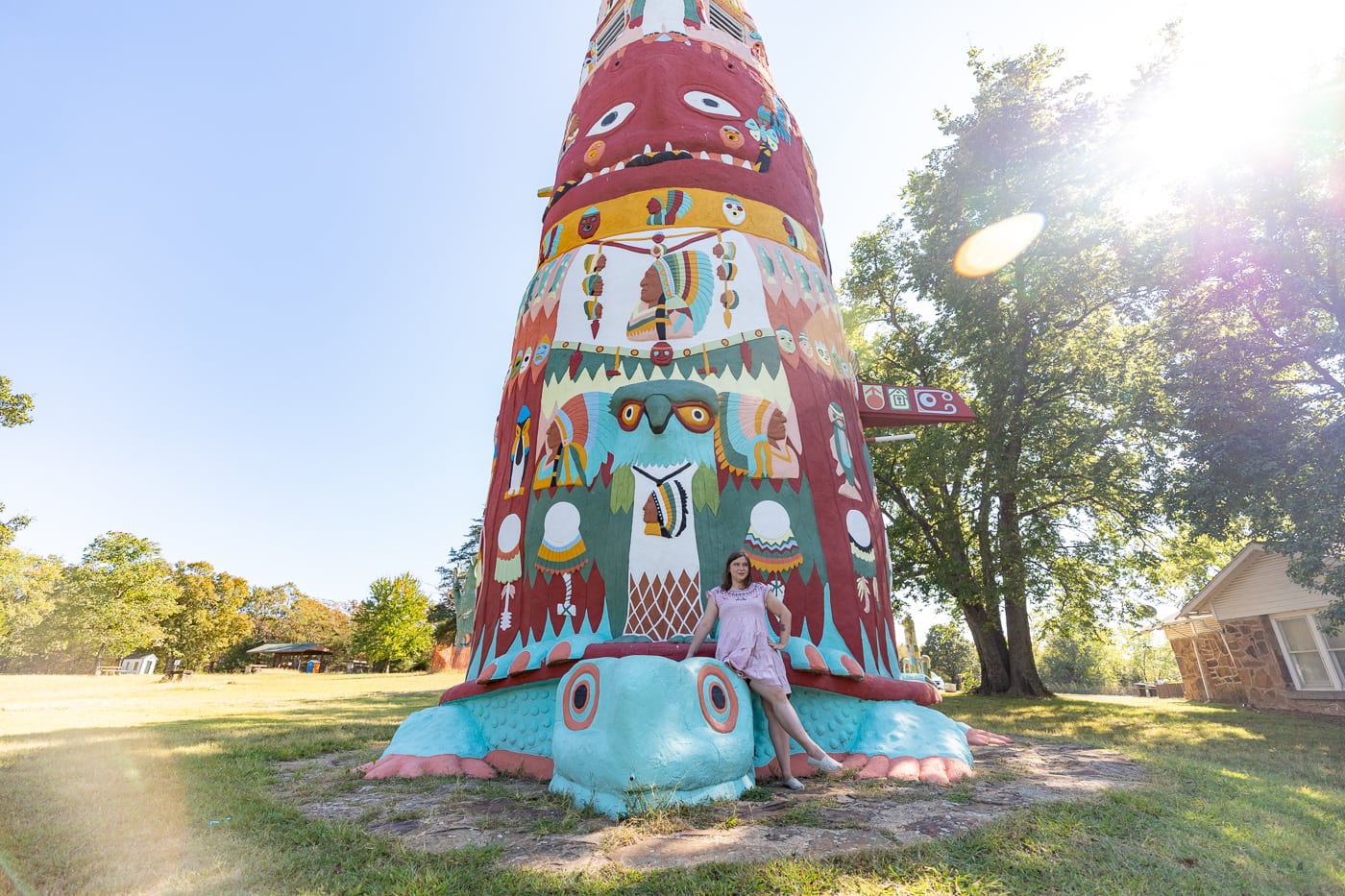
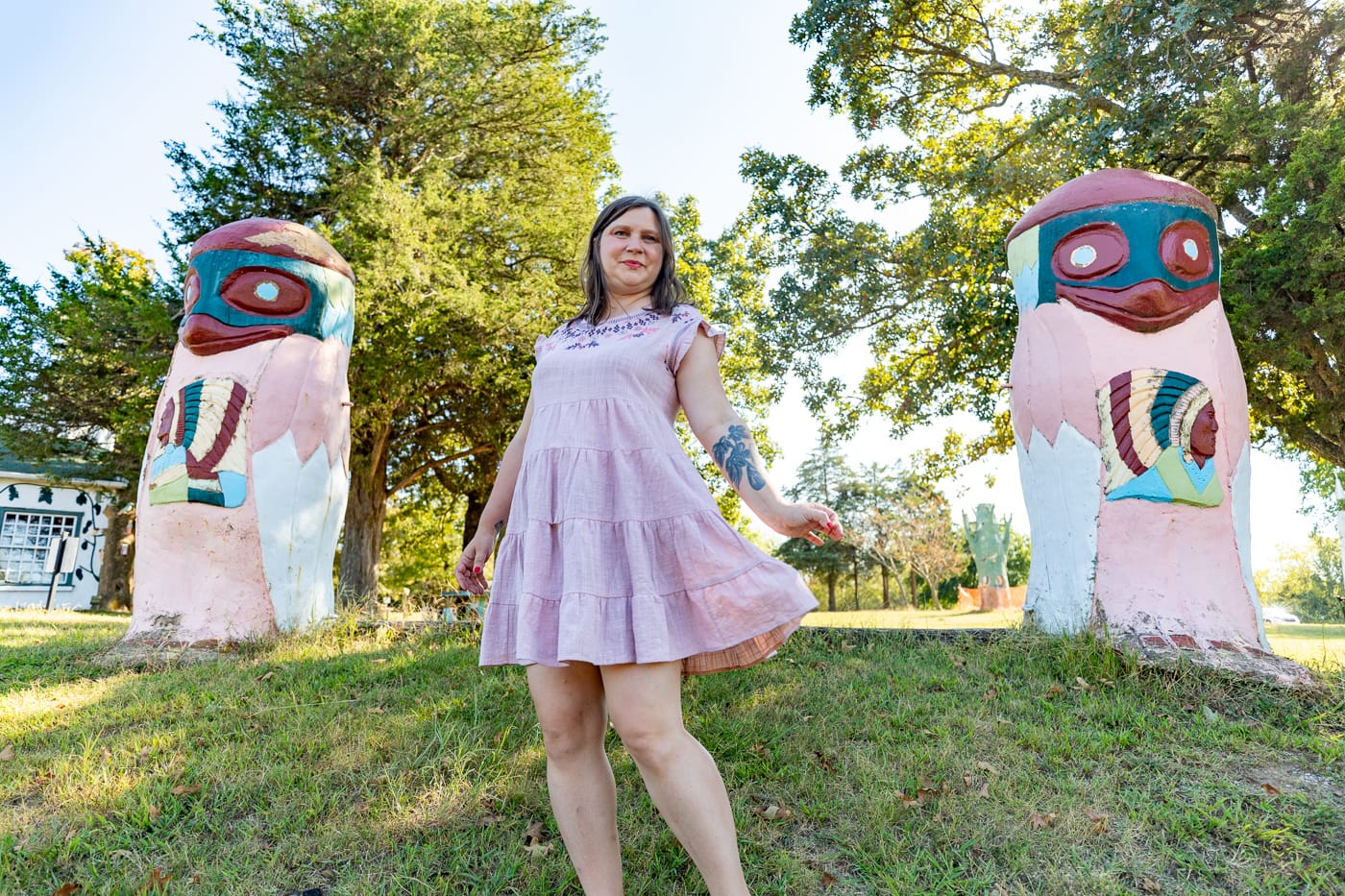
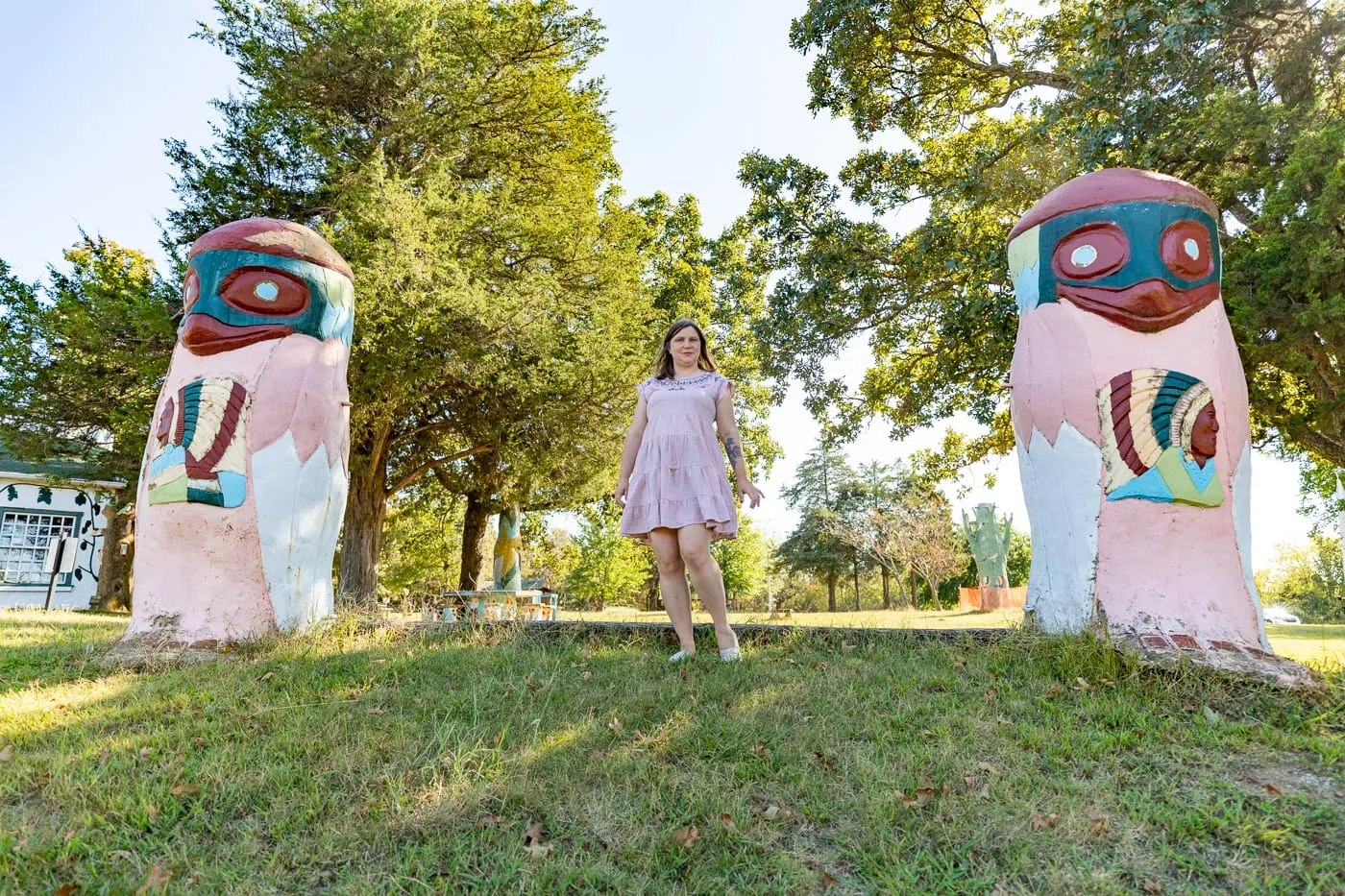
This is one of the top Oklahoma Route 66 attractions. Looking for others? Be sure to find the Blue Whale of Catoosa, Buck Atom’s Cosmic Curios, Pops 66 Soda Ranch, OK County 66, and the World’s Tallest Gas Pump.
Ed Galloway’s Totem Pole Park
Address: 21300 OK-28 A, Chelsea, OK
Hours: Daily, 6am-8pm
Cost: Free to See
Pin this Oklahoma Route 66 roadside attraction:
